
Testing – Digital Agency
The testing strategy aids in the creation of a baseline for digital marketing efforts. It aids in discovering the appropriate consumers, marketing channels, providers, and creativity, resulting in highly optimized marketing campaigns that increase revenue while saving money.
When building your business, it can be challenging to determine which marketing methods are most effective with your target demographic. A/B testing and other conversion optimization tactics allow you to experiment with different approaches. This process will enhance your content, deliver the most satisfactory customer experiences, and achieve your conversion goals faster. This AB testing primer will teach you the principles of the technique.
What is A/B Testing?
A/B testing is also known as split testing. A/B testing is a randomized experimentation process where multiple versions of variables (web page, page element, etc.) are shown to different segments of website visitors simultaneously. This will determine which version has the most significant impact and drives business metrics.
At its most basic, A/B testing compares two versions of something to see which works better. Consider the experiments you carried performed in elementary school. You will witness different results if you plant two seeds in two cups of earth and place one in the closet and the other by the window. A/B testing is a type of experimental setting.
Running an A/B test compares a variant to the existing experience allowing you to ask specific questions about changing your website or app and then gather statistics on the impact of that change.
Testing removes the uncertainty from website optimization and allows for data-driven decisions that alter company dialogues from "we believe" to "we know." You can verify that every change provides positive outcomes by evaluating the impact of changes on your metrics.
How Does A/B Testing Work?
To conduct an A/B test, you must produce two distinct versions of the same piece of content. Each content will have a single variable changed, showing these two versions to two similar-sized audiences. The audience will evaluate which one fared better over a set period (long enough to make accurate conclusions about your results). A/B testing allows marketers to see how one version of marketing content compares to another. Here are two sorts of A/B tests you might run to improve the conversion rate of your website:
Example 1: User Experience Test
Perhaps you want to test whether placing a specific call-to-action (CTA) button at the top of your site rather than the sidebar would increase its click-through rate.
To A/B test this concept, construct a second web page that employs the revised CTA positioning. Version A is the current design with the sidebar CTA — or "control." The "challenger" is Version B, with the CTA at the top. Then you'd put these two versions to the test by presenting them to a predefined percentage of site visitors. Ideally, the rate of visitors who view each version should be the same.
Example 2: Design Test
Maybe you'd want to see if altering the color of your call-to-action (CTA) button increases its click-through rate.
To A/B test this concept, create a second CTA button with a different button color that goes to the same landing page as the control. Use the green call to action button variation in your marketing material to obtain more clicks after your A/B test.
Process of A/B Testing
You may begin running tests with the A/B testing framework listed below:
Gather Information: Your analytics frequently reveal areas where you may begin optimizing. Start with high-traffic parts of your website or app to collect data more quickly. Look for pages with low conversion or a high drop-off rate that may be improved.
Identify Objectives: Conversion goals are the metrics you use to judge whether the variant is more effective than the original version. Goals might range from clicking on a link to purchasing or signing up for an email list.
Create Hypotheses: Once you've decided on a goal, you can start brainstorming A/B testing concepts and hypotheses for why you believe they'll be better than the present version. Once you compile a list of ideas, rank them in terms of predicted impact and implementation difficulties.
Create Variations: Make adjustments to an area of your website or mobile app experience using A/B testing tools (such as Optimizely). This may be altering the color of a button, rearranging the pieces on the page, concealing navigation elements, or something completely unique. Many popular A/B testing programs provide a visual editor that makes modifications simple. Ensure that your experiment is tested to ensure that it works as planned.
Run Experiment: Start your experiment and wait for visitors to join in! Visitors visiting your website or app will be randomly allocated to either the control or variant of your experience. This will result in assessing how everyone performs; their involvement with each event is monitored, tallied, and compared.
Analyze the Results: Once your experiment is finished, it's time to examine the findings. Your A/B testing program will display the experiment data and show you the difference in performance between the two versions of your website and whether there is a statistically significant difference.
It does not disrupt your consumers' experience or send out disruptive feedback questionnaires. A/B testing is an efficient approach to measuring your audience's response to a design or content proposal. Simply experiment with something new and let the outcomes speak for themselves. A/B testing reduces the risks involved when undertaking an optimization program. This helps you to significantly improve your website's UX by eliminating all weak links and finding the most optimized version of your website.
Resource:
https://support.google.com/optimize/answer/6211930?hl=en
https://www.optimizely.com/optimization-glossary/ab-testing/
https://hbr.org/2017/06/a-refresher-on-ab-testing?registration=success
https://mailchimp.com/marketing-glossary/ab-tests/
https://blog.hubspot.com/marketing/how-to-do-a-b-testing
Disclaimer:
Wherever any material is quoted as sourced from the published text with publishing rights vested in an individual, it is stated that it is a pure quotation and has no intention to claim it as our own.
Image Source: www.freepik.com
951 adminSeptember 6, 2022
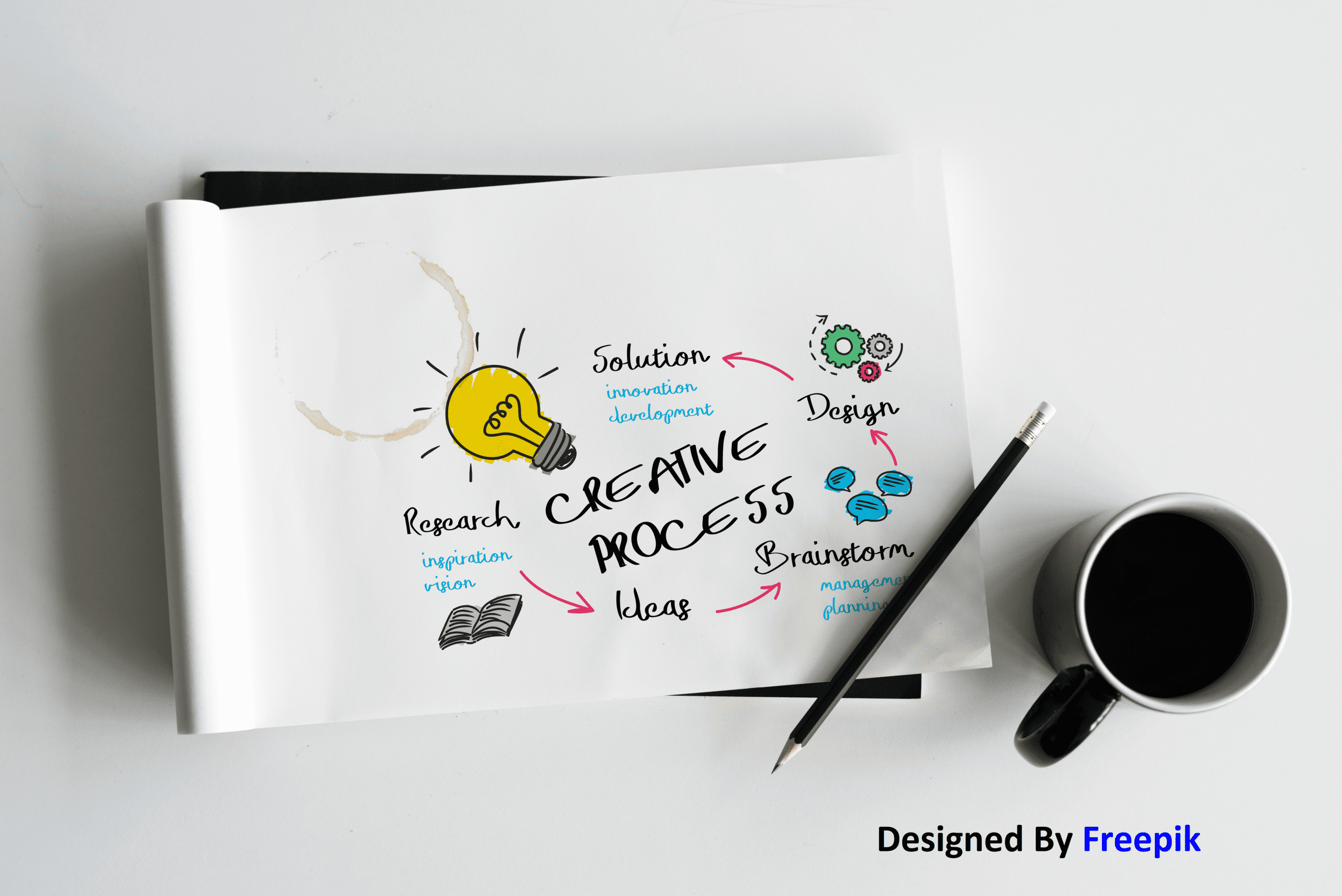
Market Testing your Product Idea
There are several techniques to assess the feasibility of your product. Paid surveys, market research smartphone applications, consignment testing, and freelance market researchers, for example, are all low-cost options to test-market your product.
The Three Major Issues in Product Idea Validation:
As we will see in this essay, product concept validation does not have to be costly or complicated. To determine your product/market fit, you must first answer three questions:
Is it feasible to construct? Here is where you learn what you'll need to develop the product: skills, equipment, cash, and so on.
Should it be constructed? Here you decide if there is a demand or need for the product, its market potential, and possible profitability.
Will people be able to make use of it? Here is where you select the product's features. You'll need to figure out how complicated it will be. You want to introduce a product that consumers will find simple to use.
Determine Your Target Market:
Knowing your target market demographic is the first step in determining whether your product concept is a viable business endeavor. Here you'd figure out if there's a real market for your goods, with people who need them & are willing to pay for them.
The most accurate approach to determine your target audience is to identify an issue your product solves and look for people who have been looking for a solution to that problem.
Begin with a Small Audience:
It's a good idea to have a tighter target group and problem point for your new product because most entrepreneurs strive and fail to build a product that will appeal to "everyone" or a larger demographic.
While not impossible, it is far more improbable than having a specific specialization. It is also more dangerous and requires more time and resources.
Unless your concept is a service, such as an eCommerce platform with a large and diversified inventory of items or a program or website that provides several benefits, selling to a larger audience may not be lucrative.
Carry Out Field Research:
The research may appear archaic, but it is one of the cheapest and most successful ways to determine whether a group of individuals out there will genuinely need your product.
Consider people who suit your target market's criteria and go to locations where you're likely to encounter these people. These might be retail centers, parks, or workplaces. It might even be close friends or relatives.
The goal is to encourage them to expose their approach to the potential problem. Saying this is simpler than doing it.
Instead of immediately rushing into your concept and maybe confounding your audience, you might utilize the structure below to get them to reveal whether they have the problem you're attempting to fix.
- Mention the issue to them and inquire if they are experiencing any.
- Inquire about how the problems are presently resolved.
- Inquire if anyone is encountering any difficulties in attempting to fix the situation.
- Please inquire about the importance of the issue in their life.
- Inquire how effective a solution is to them and how much they believe it will enhance their lives.
Resource
https://www.forbes.com/sites/allbusiness/2019/09/29/test-market-new-product-tips/?sh=30fb612cce26
https://hbr.org/1976/05/test-marketing-in-new-product-development
https://www.altexsoft.com/blog/product-idea-validation/
Disclaimer:
Wherever any material is quoted as sourced from the published text with publishing rights vested in an individual, it is stated that it is a pure quotation and has no intention to claim it as our own.
Image Source: www.freepik.com
645 adminSeptember 5, 2022
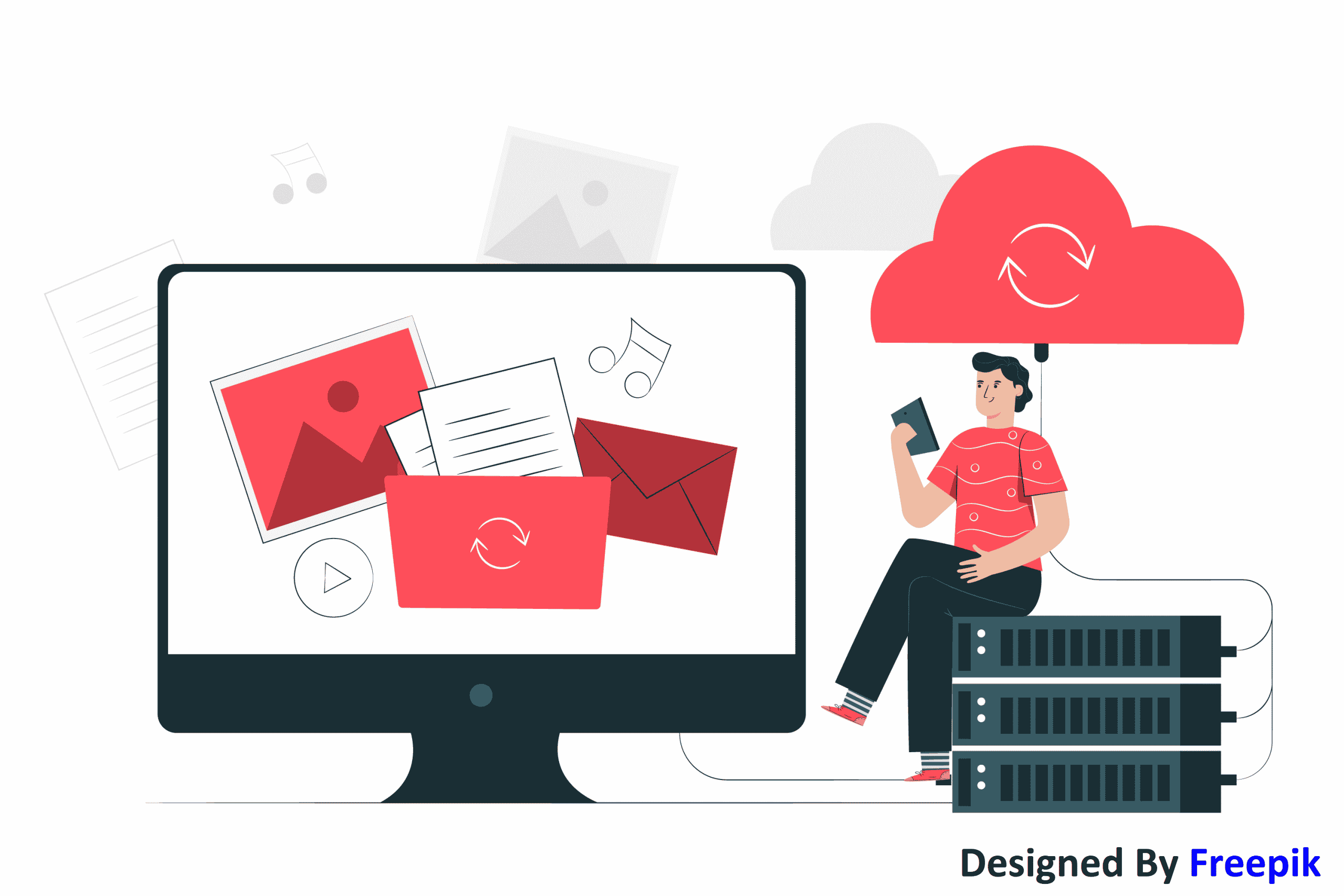
Cloud Hosting
Cloud hosting is a type of hosting that is becoming increasingly popular owing to its easy and useful capabilities. This service hosts websites, manages domain names, and manages databases. The utilization of offshore server resources that can readily expand to accommodate peak demands is what makes cloud hosting more appealing than in-house hosting.
What is Cloud Hosting?
Cloud-hosting is a means of hosting a website or internet service using a remote server rather than hosting the service on your server. The benefit of this is that you no longer have to maintain the server yourself, and you can access your website from anywhere in the world.
This is the process of storing data on the Internet. You can use your computer to access your files and programs at a time when you need them This simply means that your website makes use of the virtual resources of multiple servers to accommodate all aspects of hosting your site. The load is balanced, security is ensured, and hardware resources are virtualized and ready to use as needed. The cloud is a server cluster
How does cloud hosting work?
At its most basic, cloud hosting is classified as both Infrastructure as a Service (IaaS) and Platform as a Service (PaaS). Users are provided with the virtualized hardware resources required to deploy their own software environment while developing a Web application under the IaaS umbrella. On the PaaS side, consumers are already given a software environment in which to deploy and create Web applications more rapidly.
Each server in a cloud environment performs a certain set of duties. In the case that one server fails, other servers act as backups to supply the necessary resources to ensure the continued availability of web hosting services. When you keep your website in a cloud hosting environment, the information is distributed among many redundancy to guarantee that the website is always accessible to both you and your web visitors.
Cloud hosting often includes all aspects of website maintenance, such as cloud storage and database management tools. Many services are created with non-technical users in mind, providing a type of control panel with various features that make establishing and administering a website easier than ever before. Cloud hosting allows you to manage your domains, set up FTP accounts for remote file transfers, modify databases directly, and do a range of other tasks.
Benefits of Cloud Hosting:
• Scalability
Cloud hosting is capable of easily handling massive server loads. This is accomplished by new upgrades, hardware additions, and the application of load balancing technology. There is no need to be concerned about your website being down due to a server crash, since other servers will always pick up the slack at the appropriate moment. It indicates that a website hosted on cloud infrastructure is extremely unlikely to collapse.
• Simple Administration
Cloud hosting takes use of centralized administration of network services and servers, which simplifies management and assures flawless operation without sacrificing quality.
• Storage and size options are both Customization:
Because there is such a large network of servers, the user has practically endless hosting options if the need arises... In other words, you may establish servers with unlimited capacity; they can also be accessed via internet management panels, such as API services.
• Increased Effectiveness:
The utilisation of virtual pooling of available resources improves overall system efficiency, and the performance of individual resources such as software, servers, and networks also contributes to overall system performance.
• Multi-location Capabilities:
Another significant benefit of cloud disaster recovery is its ability to provide multi-site availability. SAN replication enables very quick fail-over as well as the ability to return to the production site following a catastrophic occurrence or disaster recovery test.
Cloud Hosting Solutions:
There are several cloud hosting companies throughout the world, each with its unique set of features and functions to appeal to both non-technical and technical consumers. Just Host, Go Daddy, and iPage are among the most popular. Each provides low monthly costs as well as a variety of options to enhance the value of their service.
Future of Cloud Hosting:
Cloud hosting is frequently used by websites that have surpassed the capacities of their current shared hosting provider. If a website is particularly popular and puts a burden on the resources provided by a shared server, you may need to find an alternative option. Dedicated hosting, in which your site is hosted on its server, is a common solution. The issue with dedicated hosting is that it is substantially more expensive and necessitates a certain level of IT expertise. Many of the benefits of dedicated hosting can be obtained through cloud hosting while avoiding the majority of the issues. To host a single site, cloud web hosting uses a virtual network of cloud servers. It differs from standard hosting in that it stores one or more sites on a single server.
The fundamental advantage of cloud hosting is dependability. When one cloud server fails, other servers might step in to keep the website operational. It is also less prone to hardware failure, and webmasters may scale their hosting resources to accommodate traffic spikes as needed.
As a result, it is the preferred platform for large-scale projects such as enterprise websites, eCommerce stores, online marketplaces, and search engines.
An Overview of Cloud Hosting
To host a single site, cloud web hosting uses a virtual network of cloud servers. It differs from a standard hosting in that it stores one or more sites on a single server. The fundamental advantage of cloud hosting is dependability. When one cloud server fails, other servers might step in to keep the website operational.
It is also less prone to hardware failure, and webmasters may scale their hosting resources to accommodate traffic spikes as needed.As a result, it is the preferred platform for large-scale projects such as enterprise websites, eCommerce stores, online marketplaces, and search
Resource:
https://www.milesweb.com/blog/hosting/what-is-cloud-hosting-how-does-it-exactly-work/
https://www.businessnewsdaily.com/5030-what-is-cloud-hosting.html
https://www.hostinger.in/tutorials/what-is-cloud-hosting
https://www.itproportal.com/features/benefits-of-cloud-website-hosting/
Disclaimer:
Wherever any material is quoted as sourced from the published text with publishing rights vested in an individual, it is stated that it is a pure quotation and has no intention to claim it as our own.
Image Source: www.freepik.com
1157 adminSeptember 5, 2022

AI Platforms for Content
The creative aspect can be enjoyable, but the scientific element is far more challenging. In addition, creating content is a labor-intensive process that takes time, effort, and input.
So wouldn't it be magnificent if there was a way to still take pleasure in the enjoyable aspects of content creation without having to worry about slavishly producing content every day?
You can, due to tools for creating AI content. In addition to your regular content creation efforts, using artificial intelligence can help you increase your output without sacrificing the quality of your production.
What exactly is the generation of AI content?
Everyone is asking this question, but the answer is far from the image of a room full of robots obdurately banging away at keyboards that come to mind. AI content production essentially entails having software do the material building for you. It writes everything from blog posts to digital media text to ebooks, landing sites, emails, product listings, etc., and things in between. There is even a move on the way to creating audio and video content, and the tools in question provide a wide range of abilities. Others excel at writing email subject lines that get opened, while some can make blog entries in the majority with the press of a button.
Content AI and Machine Learning Application Types:
Content production (automation) A few keywords and some tools can generate a complete collection of articles. An AI tool will be better able to write any content that needs to fit inside SEO parameters.
Modern AI systems can update and modify any number of articles at a considerably faster rate than a human content producer, thanks to dynamically changing SEO rules and algorithms.
Personalization of Content
Most online businesses get a wealth of helpful information about their customers. Content customization uses visitor information (such as geographic location, demographics, and shopping preferences) to provide pertinent content based on audience preferences and motivations.
It can be anything from a particular call to action to a dynamic landing page that alters depending on consumer segments based on location or industry! The introduction of intelligent chatbots that choose material for consumers based on their prior interactions may further personalization.
Text mining and keyword research
Some programs can examine the best keywords for improving your website's organic ranking. These programs scour your text-based material for the presence of high-performing keywords that will bring visitors to your website.
Best Artificial Intelligence Content Creation Tools in 2022
- Articoolo: Article Generator Automatic
- Automated Insights' Wordsmith: BI Meets Content Creation
- Grammarly: A Free Online Writing Aid
- Content Spinner by WordAi
- Article Forge: High-Quality Content in 60 Seconds or Less
Resource:
https://mydukaan.io/blog/ai-content-creation-tools/
https://www.jasper.ai/blog/ai-content-creation
https://www.predictiveanalyticstoday.com/artificial-intelligence-platforms/#:~:text=What%20are%20the%20Top%20Artificial,the%20top%20Artificial%20Intelligence%20Platforms
Disclaimer:
Wherever any material is quoted as sourced from the published text with publishing rights vested in an individual, it is stated that it is a pure quotation and has no intention to claim it as our own.
Image Source: www.freepik.com
837 adminSeptember 2, 2022 Youtube Video
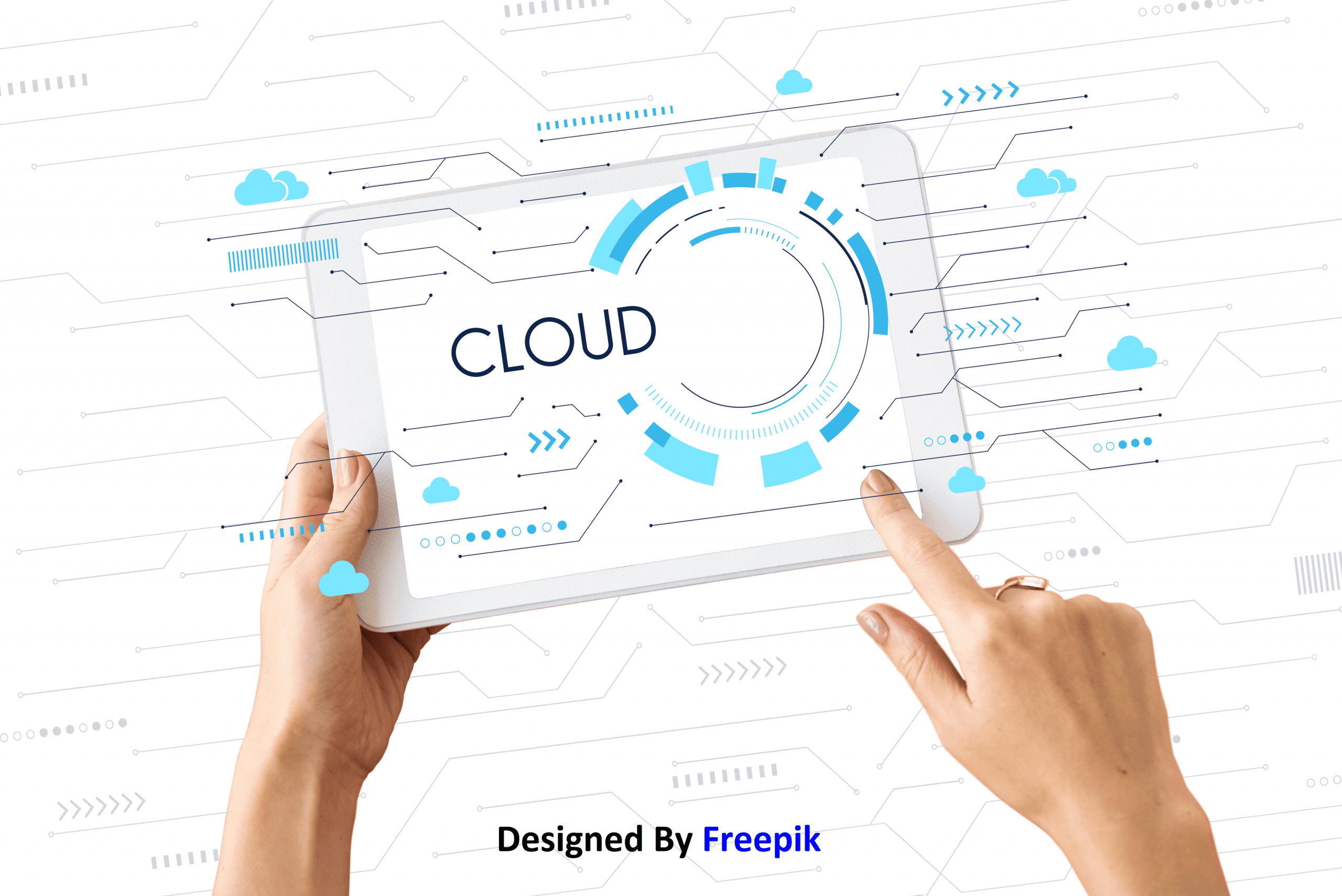
Cloud or Not
Everything old has become new again.
Let us first dispel some common misconceptions about cloud data storage.
The debate over the merits of data in the cloud appears to stem from the perception that the concept is new and unproven, so people are unsure whether the benefits outweigh the risks.
The cloud was not new as early as the 1970s because many large companies could not afford their mainframe computers. Instead, businesses would "dial in" to remote computers managed by time-sharing services in what was then known as "time-sharing." Users of such services would send their data and analyze it on managed computers. Does this sound familiar?
Furthermore, because many companies were using a shared environment, users could easily access data of common interest. The time-sharing service would keep demographic and econometric data databases, which users could use in their analyses.
Reasons for leaving the cloud
An undercurrent among more giant corporations is making them reconsider their cloud services. The most common is bill shock. The temptation to build their internal cloud is growing as the cost of storage and servers falls. Other issues raised by businesses include latency issues, project failures, and a lack of functionality in cloud services. The departure is intensifying. While most cloud defectors are giant corporations, small businesses look to large corporations for philosophical guidance. Companies are constructing their clouds with all of the hassles associated with the cloud, not to mention security concerns. However, it comes at a cost that cannot measure solely in terms of hardware.
Data Monetization: Cloud Data Sharing
The fact that the cloud is neutral ground is one of the least discussed aspects of cloud computing. People can access and use data stored in the cloud via the Internet. While this idea is not new, today's technology provides unprecedented data collaboration and monetization opportunities. There is no reason a business partner cannot have access to information, albeit limited and controlled access, the inverse of the security issue. In non-cloud environments, data sharing is significantly more difficult.
Data monetization is a critical business benefit of data sharing, which is especially appealing for any business with high-volume customer data, such as retail or telecom.
Advantages of the Cloud
At the starting point of this article, it was advanced that the main benefit of the cloud can also be seen as a primary concern in using it because someone else is doing the work for you.
You can use the cloud to access expertise that your organization may not have. Working with a cloud provider has cost and operational advantages over doing it yourself. The typical acquisition and purchase order process takes time, making it difficult for a company to obtain computer systems when needed. It is frequently more accessible for the cloud provider to acquire new hardware than for your company to purchase what you require.
Is it better to cloud or not to cloud? You have a choice. Ultimately, companies should not make decisions based on organizational comfort; what is most valid from an operational standpoint will create the most significant business benefit. And make sure to ask the appropriate questions.
Resource:
https://www.wired.com/insights/2013/05/to-cloud-or-not-to-cloud-where-does-your-data-warehouse-belong/
https://www.forbes.com/sites/larrymyler/2018/01/11/to-cloud-or-not-to-cloud/?sh=408ac46a627c
https://www.redhat.com/en/topics/cloud-computing/public-cloud-vs-private-cloud-and-hybrid-cloud
Disclaimer:
Wherever any material is quoted as sourced from the published text with publishing rights vested in an individual, it is stated that it is a pure quotation and has no intention to claim it as our own.
Image Source: www.freepik.com
1094 adminAugust 30, 2022
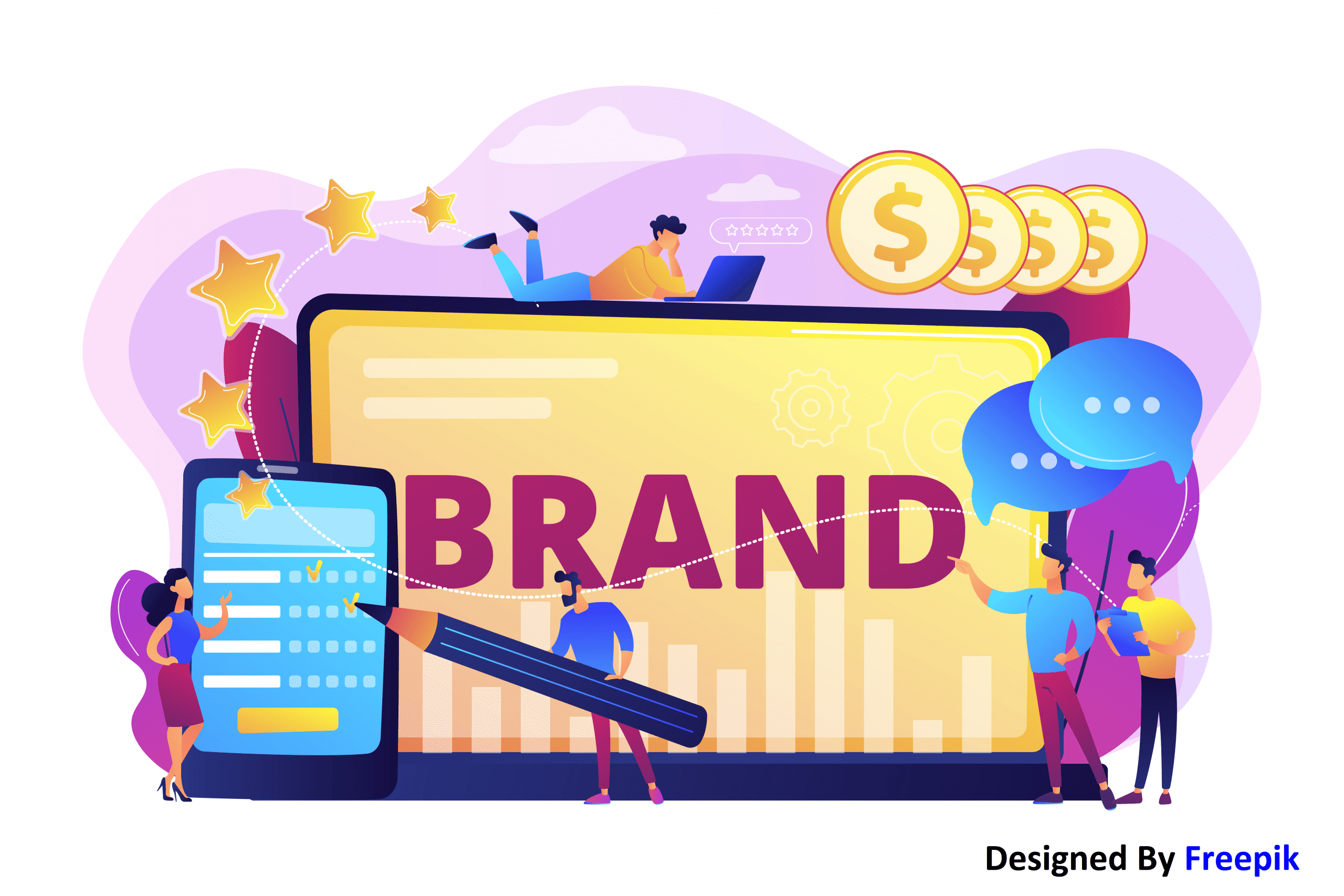
Brand Reputation Management
Brand reputation management will assist you in checking all of the boxes while increasing your market share. How does the procedure accomplish this?
What is Brand Reputation Management?
Brand reputation management is monitoring how customers view your company and taking deliberate action to improve your brand's image when necessary. Nowadays, reputation management is about monitoring and safeguarding your brand's online reputation in places like reviews, social media, and Google.
Constant monitoring of your firm is required for brand reputation management activities. When evaluating your brand reputation, potential customers consider various elements, such as friendliness, trustworthiness, product or service quality, and brand awareness.
The public's perception of a brand is influenced by their direct or indirect experience with the brand. It includes everything from a brand's product or service quality to how they treat their consumers and workers.
As a result, controlling brand reputation includes:
- Responding to criticism in public
- Being receptive to feedback
- Allowing all stakeholders to contribute their insights
- Interacting with your audience
According to a Forbes article by reputation management specialist Paul Blanchard, brand reputation is a nexus of forces that customers are influenced by when making a conscious or unconscious choice between brands.
Why is Brand Reputation Important?
So, what is the significance of reputation? Why is it as important as the bottom line in a society where we see companies as amoral, greedy, slightly malevolent creatures to profit their executives and shareholders? What do the emotions of others, many of whom are not even clients, mean to them? There are two elements to this: the straightforward fact that reputation is essential to the bottom line and the more nuanced fact that a brand's image is tied to its fundamental purpose.
Consumer's conscious (or unconscious) choices between companies are influenced by a complex set of factors that can be summed up as "reputation." An automobile buyer may select a manufacturer with a track record of dependability. A perfume buyer may choose a brand with an image of luxury and refinement. A buyer of electronic gadgets may base his or her decision on an image of elegant design and efficient performance.
Online reviews are a crucial component of a brand's business model. Nearly 40% of customers have grown to reject traditional advertising — knowing the expense in corporate marketing departments — but a majority will accept online peer reviews positively because they are authentic.
Furthermore, buyers constantly seek social awareness in the brands they buy or the businesses from which they acquire services, being a vital characteristic of millennials. For example, many consumers (particularly younger ones) are concerned about environmental and sustainability issues. The usage of palm oil in sweets is now associated with a hazardous connection, as Nestlé learned when Greenpeace spoofed a Kit Kat commercial. BP is currently advocating a low-carbon future to balance the optics of its trade in fossil fuels. Simultaneously, the enormity of the nonrecycled plastics crisis has recently dominated the news narrative. Brands must show an environment-friendly face to the world to attract the lucrative younger generation and groom them as long-term clients.
Benefits of brand reputation management
- Increase sales by developing long-term connections with clients and continually maintaining high quality and service levels.
- Gain a competitive advantage by becoming well-known among clients' friends and family as a go-to brand.
- Make customers brand ambassadors by encouraging them to share great experiences and word-of-mouth recommendations.
- Impact business expansion by giving management the confidence to enter new markets and extend the company's operations or product range and offerings.
- Retain employees by being an attractive employer with a good market reputation and with whom people will want to associate themselves professionally.
Resource:
https://brand24.com/blog/what-is-brand-reputation-management/#WhatIsBrandReputationManagement
https://sproutsocial.com/insights/brand-reputation-management/
https://www.forbes.com/sites/forbesagencycouncil/2019/12/27/the-importance-of-brand-reputation-20-years-to-build-five-minutes-to-ruin/?sh=7d5d21ca2e69
https://www.mediatoolkit.com/blog/brand-reputation-monitoring-analysis-management-tools/
Disclaimer:
Wherever any material is quoted as sourced from the published text with publishing rights vested in an individual, it is stated that it is a pure quotation and has no intention to claim it as our own.
Image Source: www.freepik.com
752 adminAugust 23, 2022

Cyber Security for Small Business
Due to technological advancements, individuals and companies are now more interconnected than ever. However, the networks that keep people linked are also rife with cyber risks. Companies today rely on these networks to execute financial transactions, sell products, and offer online services; therefore, cybersecurity is critical.
These cybersecurity solutions come in a variety of flavors and prices. And some small and medium-sized firms may lack the cash or money to cover most of them. There is no lack of cyber threats aimed at small businesses, whether ransomware, DDoS (distributed denial of service), phishing, or another danger.
Importance of cybersecurity for small businesses
While major corporations, such as multinational corporations, have the resources to invest in complete cybersecurity systems, small firms may not have the same luxury. Nonetheless, cybersecurity is an integral component of small business operations. Even the most basic security measures can prevent a wide range of dangers, making investing in expensive security solutions useless if your company is tiny. Instead, consider examining your goals and budget to evaluate whether cybersecurity solutions are enough to secure your company's critical assets. So how does cybersecurity benefit you and your business? The following points are some of the ways that cybersecurity helps small businesses.
1. Inform employees of security principles.
Establish fundamental security practices and regulations for employees, such as mandating secure passwords, and develop acceptable Internet use guidelines that specify penalties for breaking firm cybersecurity policy. Establish ground rules for managing and securing consumer information and other essential data.
2. Prevent cyber assaults on information, computers, and networks.
Maintain clean machines: the most effective defense against viruses, malware, and other online risks is to use the most recent security software, web browser, and operating system. Configure your antivirus program to scan after each update. Install any additional critical software updates as soon as they become available.
3. Create an action plan for mobile devices.
Mobile devices can provide substantial security and management difficulties, especially if they contain sensitive data or have access to the corporate network. Users must password-protect their devices, encrypt their data, and install security software to prevent thieves from stealing information. Establish processes for reporting missing or stolen equipment.
4. Create backups of critical corporate data and information.
Back up the data on all PCs regularly. Word processing papers, electronic spreadsheets, databases, financial files, human resources files, and accounts receivable/payable files are all examples of critical data. Back up data automatically, or at least monthly, and save backup copies elsewhere or in the cloud.
Takeaways:
Cybersecurity is critical for every firm that relies on IT resources and the internet to function, whether large, medium, or small. Various security strategies and methods need varying amounts of money. Without adequately analyzing your company's needs, you may invest too much or too little in cybersecurity, leaving you susceptible to cyber assaults.
Consult with an IT specialist or a business consultant to discover the best cybersecurity solutions for your company and budget.
Resource:
https://www.wired.com/sponsored/story/why-small-businesses-need-to-take-cybersecurity-seriously/
https://www.fcc.gov/communications-business-opportunities/cybersecurity-small-businesses#:~:text=Broadband%20and%20information%20technology%20are,data%20from%20growing%20cybersecurity%20threats
https://www.businesstechweekly.com/cybersecurity/application-security/why-is-cybersecurity-important/
Disclaimer:
Wherever any material is quoted as sourced from the published text with publishing rights vested in an individual, it is stated that it is a pure quotation and has no intention to claim it as our own.
Image Source: www.freepik.com
904 adminAugust 22, 2022 Youtube Video

Google Cloud
It offers various modular cloud services, including computing, data storage, data analytics, and machine learning, in addition to a set of management tools. Registration necessitates the use of credit card or bank account information.
Google unveiled App Engine, a platform for creating and hosting web applications in Google-managed data centers, in April 2008, as the company's first cloud computing offering. In November 2011, the service was made widely available. Since the launch of App Engine, Google has introduced several cloud services to the platform.
An Overview of Google Cloud Services:
Google Cloud provides computing, storage, networking, big data, machine learning, and Internet of Things (IoT) services, as well as cloud management, security, and other developer tools. Google Cloud's cloud computing offerings include the following:
- Google Compute Engine is an infrastructure service (IaaS) provider that offers VM instances for workload hosting.
- Google App Engine is a platform as a service (PaaS) product that provides software developers with scalable hosting from Google. Developers may also use an SDK to create software products that operate on App Engine.
- Google Cloud Storage is a cloud storage technology designed to store massive amounts of unstructured data. Google also provides database storage choices, such as Cloud Datastore for non-relational NoSQL storage, Cloud SQL for fully relational MySQL storage, and Google's native Cloud Bigtable database.
- Google Kubernetes Engine (GKE) is a management and orchestration solution for Docker containers and clusters running in Google's public cloud services. Kubernetes, Google's open-source container management solution, is the foundation for Google Kubernetes Engine.
- Google Cloud's operations suite, Stackdriver, is a collection of integrated tools for monitoring, logging, and reporting on the managed services that power Google Cloud applications and systems.
- Serverless computing includes event-based task execution tools and services such as Cloud Functions for building functions that handle cloud events, Cloud Run for managing and executing containerized applications, and Workflows for orchestrating serverless products and APIs.
- The database is a collection of technologies supplied as fully managed services, including Cloud Bigtable for large-scale, low-latency applications, Firestore for documents, Cloud Spanner for a highly scalable, highly reliable relational database, and CloudSQL for MySQL, PostgreSQL, and SQL Server.
What exactly is the distinction between Google Cloud and Google Cloud Platform?
Google Cloud is a collection of internet-based services that can assist businesses in going digital. Google Cloud Platform, the subject of this blog article, is a component of Google Cloud that provides public cloud infrastructure for hosting web-based applications.
How did Google Cloud Platform come to be?
GCP debuted in 2008 with the release of App Engine, a developer tool that lets users run their web apps on Google infrastructure. By late 2011, Google had removed App Engine from its preview state and made it a fully supported Google product. In the decade afterward, Google produced and acquired additional services and products to improve its cloud platform user experience.
What exactly are the Google Cloud Platform services?
GCP provides several services, but here are a few examples: Computing and hosting, storage and database management, networking, big data, and machine learning are all areas of expertise.
Resource:
https://cloud.google.com/
https://acloudguru.com/blog/engineering/what-is-google-cloud-platform-gcp
https://www.techtarget.com/searchcloudcomputing/definition/Google-Cloud-Platform
https://en.wikipedia.org/wiki/Google_Cloud_Platform
Disclaimer:
Wherever any material is quoted as sourced from the published text with publishing rights vested in an individual, it is stated that it is a pure quotation and has no intention to claim it as our own.
Image Source: www.freepik.com
1212 adminAugust 4, 2022
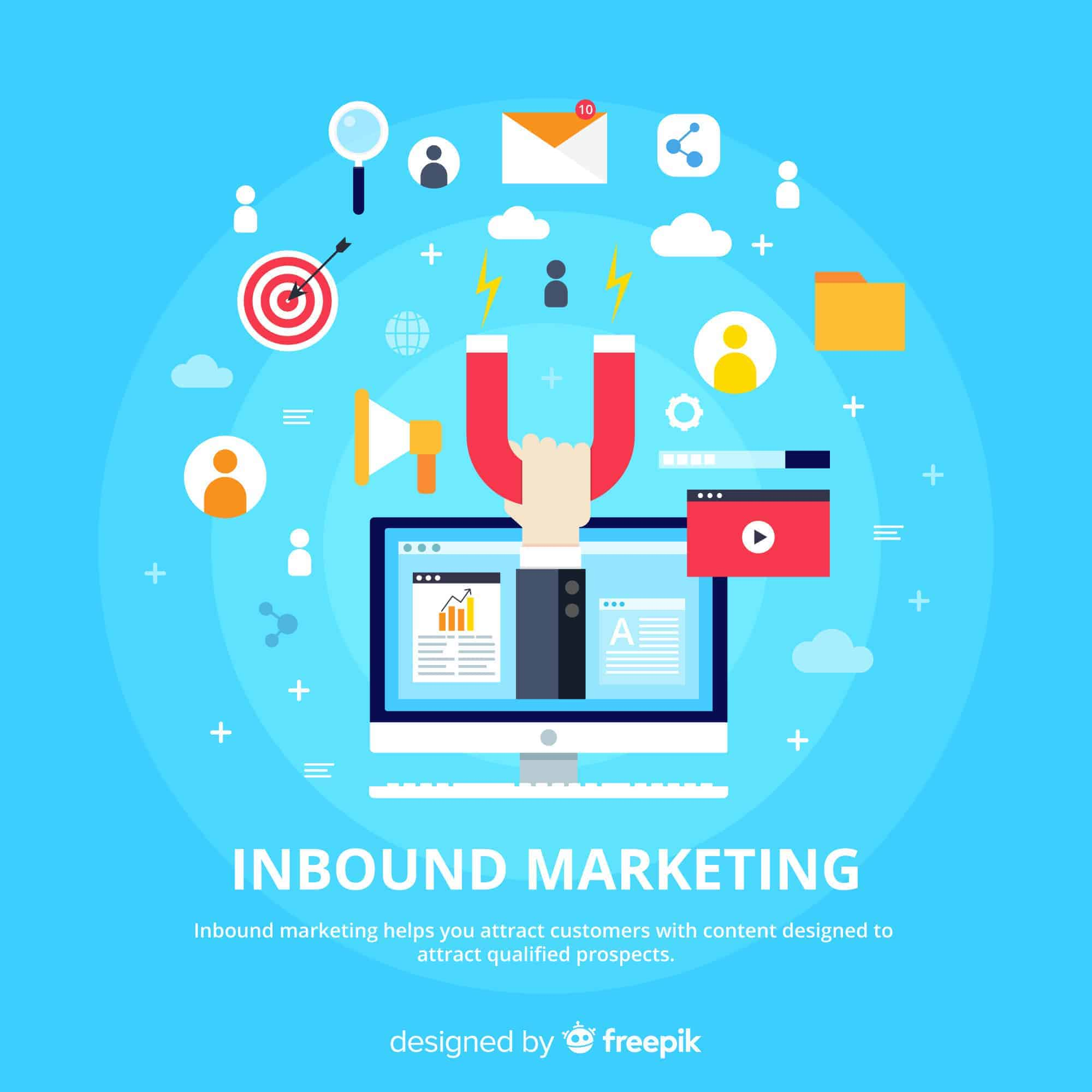
Ways to Make A Website A Lead Gen Magnet
Enter the lead magnet by delivering a resource in exchange for the prospect's email address or any other sort of contact information, these small packages of delight work as incentives that entice website users to become prospective purchases. And the good news is that lead magnets take less time to make than you think.
What is a Lead Magnet?
The lead magnet is free assets that entice potential clients to click on your link, and visitors are more likely to connect to your email list and, in the end, become paying users if you use this free material.
Here are the three ways to make your website a lead generation magnet:
Create PDF files of High-Performing Blog Posts:
If so, you're only a few footsteps away from converting your most good blog article into a valuable PDF booklet that you can use to expand your company's email list.
First, review your site statistics to identify high-traffic blog entries. When you've found the relevant post, include additional material so that the PDF is more valuable than the original blog post. You could even spice it up by incorporating other images.
Finally, provide a form field so subscribers can enter identifiers like their name, email, and phone number, and you're done.
Parts of your Product or Service should be given away.
When you offer a lead magnet to build your email list, remember that your ultimate aim is to sell your product or service.
Your lead magnet should ideally serve to pre-sell whatever product or service you will eventually want your subscriber to purchase.
What better approach to entice subscribers to buy your product than to give it away for free? It might be a website template design for a graphic designer. Potency must be the first module of your online course as a business consultant. It might also be a short list of properties for a real estate agent.
Handout / Cheat Sheet
Cheat sheets and handouts are practical because they often give highly tactical information that saves the prospect a significant amount of time. While frequently supplied in PDF format, cheat sheets take a different approach than reports and guidelines.
Cheat sheets are one or two pages long and to the point. These are frequently presented as checklists, plans, and mind maps.
Resource:
https://www.impactplus.com/blog/how-to-create-a-lead-magnet
https://www.leadpages.com/blog/15-ways-to-create-a-high-value-lead-magnet/
https://optinmonster.com/9-lead-magnets-to-increase-subscribers/
Disclaimer:
Wherever any material is quoted as sourced from the published text with publishing rights vested in an individual, it is stated that it is a pure quotation and has no intention to claim it as our own.
Image Source: www.freepik.com
916 adminAugust 2, 2022

Finding New Businesses
With most businesses presenting their products and services online, we expect to see more digital marketing and sales rivalry. It's no surprise that every company desires a devoted customer base. However, to do so, it must first identify prospective leads. That is where we can help you by demonstrating how to attract clients for digital marketing on any budget.
Ask Your Audience:
Reaching out to your current network and asking specific questions about your product and market is a simple method to undertake some customer development. To develop a product for a particular niche, you must know individuals in that area.
You may also search your current LinkedIn contacts for people in your sector and email them. One of the leading bring about of new business failure is founders' failure to communicate with consumers. It's easy to convince yourself that you know all there is to know about your target market and that they require your product. Even if they know their assumptions are accurate, the finest marketers are modest enough to talk to their market and validate them.
Adopt a Customer Development Tool:
Most marketers know that platforms such as Qualaroo and SurveyMonkey may help you better understand your consumers. But did you realize they may also assist you in generating more leads and customers?
To know your ideal customer profile, generate more leads to build a survey that qualifies your prospects.
Google AdWords:
When most businesses seek a new digital marketing firm, they will resort to Google. They will search Google even if they are not seeking an agency but may be convinced to do so. Many stressed-out company owners have Googled 'how to promote on social media or something similar.
You may and should attempt to appear high in their organic SERPs. However, this takes time. While your SEO efforts yield results, Google Ads (previously AdWords) may be your greatest friend. You can direct potential customers to your digital front door using the correct keywords.
Use Your Email List to Launch:
Launching your product through an email list is one of the best ways to ensure sales. There are several methods for starting an email list from the beginning. For example, conduct one-on-one customer development using social media platforms such as Quora or Twitter and then add them to your launch email list. Below, we'll review some alternative methods for growing your email list. For the time being, let's look at how to structure your launch sequence to maximize sales.
A lucrative launch sequence often provides value to subscribers in the first few emails. It encourages them to purchase your product in the last one or two letters.
Inbound Marketing:
In a perfect world, your clients would come to you rather than you going to them. And concentrating on an inbound marketing approach can assist you in doing this. You draw clients to your website by generating informative, value-added material your audience wants and needs. And then, presumably, onto your email list, followed by your customer list.
It's a longer-term plan, but it has the potential to pay off. Make sure your material is SEO-friendly and focuses on relevant keywords so that potential clients may find you through organic searches.
Remember that tactics for getting from zero to 100 customers are not the same as those for getting from 100 to 1,000. You could be putting in much of your time at first, sending out cold emails, LinkedIn messages, or creating paid advertising campaigns.
You may communicate one-on-one with your subscribers, asking questions and reacting to each email. You might use sites like Quora to find long-tail keywords and write content around them to attract search traffic.
Resource:
https://digitalagencynetwork.com/how-to-get-clients-for-your-digital-marketing-agency/
https://snov.io/blog/how-to-get-clients-for-digital-marketing/
https://www.convinceandconvert.com/digital-marketing/your-first-100-customers/
Disclaimer:
Wherever any material is quoted as sourced from the published text with publishing rights vested in an individual, it is stated that it is a pure quotation and has no intention to claim it as our own.
Image Source: www.freepik.com
682 adminJuly 28, 2022 Youtube Video

Digital Tools for Small Business
File sharing and storage - Google Drive
Google Drive is Google’s cloud storage service, which includes Google Docs and Sheets. It’s a fantastic office program that allows for real-time file creation, sharing, and collaboration from anywhere around the globe. Google Drive will enable you to cut the number of emails and back-and-forth while keeping your shared documents in one location. And the most significant part is that it is exceedingly simple and handy.
Chat and Collaboration – Slack
Communication is vital in all characteristics of life and is especially important in business. Everyone informed and on the same page is censorious to keep things going smoothly and prevent miscommunication issues easily.
That is why you require an app through which you can all interact with one another.
While Skype and WhatsApp are excellent for one-on-one communication, if your team includes more than 2-3 individuals, you should consider something more complex, such as Slack.
Individual and group messaging are available in Slack, making it much easier to communicate with diverse teams. You may, for example, create a different group for your design team or web developers, and you can even have video calls (just one on one with the free plan and up to 15 teammates with the Pro plan)
Video Conferencing: Google Meet
Video conferencing is needed for online meetings and events in a world where many individuals freelance or work remotely.
Small companies are being pushed to engage with team members, providers, business colleagues, and consumers over the internet.
Consider Google Meet if you need a video conferencing solution for your business. While Zoom has grown in popularity in the last year and is excellent for video conferencing, Google Meet may be a better option for a small business, especially if you choose the free version.
Social Media Management: Buffer
If you operate a small business — or any business, for that matter — advertising it on social media isn't an option, but keeping up with posts and messages is a nightmare if you don't employ a social media management tool like Buffer.
Buffer is perfect for newcomers to social media management since it enables you to:
- Make and schedule posts for all of your social media networks.
- Access a sleek and straightforward, easy-to-visualize dashboard that automatically schedules material
- Messages from all social networks are available in a single mailbox.
- View reports on social analytics
Email Marketing: Mailchimp
Nowadays, there are several ways to advertise your brand, with social media being one of the most important, but email remains the favorite marketing channel for 73 percent of consumers.
Email marketing solutions such as Mailchimp assist you in engaging with your audience by producing customized emails that make you appear highly professional. Because we've all seen how poorly email marketing is done, you can develop deep and long-lasting relationships with your clients while significantly increasing your return on investment.
Begin by studying these digital tools early on—it will be easier to scale up with them than to adapt your tools to your existing, may be inefficient, procedures.
Resource :
https://themyouandme.com/blog/digital-tools-for-business-in-2021
https://www.orbitmedia.com/blog/tools-for-small-businesses/
https://rewind.com/blog/tech-tools-small-business/
Disclaimer:
Wherever any material is quoted as sourced from the published text with publishing rights vested in an individual, it is stated that it is a pure quotation and has no intention to claim it as our own.
Image Source: www.freepik.com
747 adminJuly 25, 2022 Youtube Video

It’s Time to Change Your Approach to Content
Freshen Things Up:
Our first and most crucial point is to get updated. Fast-paced industries like business, technology, and finance are frequently affected by this transformation. Changes in government legislation, technological advancements, or reforms can soon render content obsolete and no longer relevant. Whatever path you take, you should complement these efforts with content that encourages simplicity and quick and easy – yet captivating – consumption. Microblogging is an excellent example. You can present material on sites like Twitter, Pinterest, and Tumblr clearly digestible and quickly recycled and shared by followers.
Quality Over Quantity:
You've probably heard about this one time and time again, but we really can't stress this enough. Lately, every business is churning out content pieces to attract new customers, but very few seem to be making an effort to make sure that each one is up to snuff; marketers must focus on quality over quantity. According to sources, over 75% of all content produced today is not shared to or linked from anywhere, ultimately defeating the purpose of creating them.
Concentrate on Your Users:
You can't write a compelling digital copy until you know who you're writing for, who is using your website or app, what they hope to achieve, and what stands in the way. Will your remarks help them succeed or hinder them? Remember that you are not the user. Even though you intend to use the site or app, you are not the user. You know far too much about digital products to be trusted when planning and developing them (sorry). Real users don't know anything about developing websites or apps, but they must be able to utilize them without difficulty. Learn about them and observe how they respond to your remarks.
Appropriate Video Content:
Video is one of the very few formats equally popular among younger and older groups while also being simply accessible and straightforward to work with. With major social platforms providing more reasons to use video these days (such as increased priority on news feeds and auto-play features) and the rising trend of video-focused mediums (such as Vine, Snapchat, and Periscope), video content has now reached new heights in terms of potential reach.
The Influence of Words:
Words determine the quality of your digital product's user experience as much as organization, functionality, and structure. As you read this, your website or app may be causing incredible frustration to someone. Perhaps they can't find what they're looking for or are unsure what action to take. They're developing an unfavorable opinion of your company, trying out your competitor's website or app instead. Your remarks can either help them or make matters far worse. If you aren't continuously adopting a digital mindset regarding words online, it's time to reconsider your content creation strategy. Fortunately, you can begin right now.
Conclusion:
Above all, knowing your audience is the key to developing exciting content. What are their main concerns? What delights and surprises them? What is helpful to them, and what makes them laugh?
Please put on your entertainer's and teachers’ hats, or give them the means to entertain themselves. The actual question is, where will you start?
Resource:
https://truematter.medium.com/its-time-to-change-your-approach-to-digital-content-c80b8395fb3f
https://ducttapemarketing.com/changing-content-marketing/
https://www.brandwatch.com/blog/4-approaches-to-content-that-will-boost-audience-engagement/
https://blog.markgrowth.com/7-ways-your-approach-to-content-marketing-needs-to-change-780eadbff7fe
Disclaimer:
Wherever any material is quoted as sourced from the published text with publishing rights vested in an individual, it is stated that it is a pure quotation and has no intention to claim it as our own.
Image Source: www.freepik.com
583 adminJuly 15, 2022

New Technologies
Technologies might take a while to reign over marketers when the globe reopened in 2021. We're unsure if they'll be long-term components of a new routine or temporary adaptations to lockdown life. Nobody can predict with certainty what the future of marketing will look like. However, experts may offer their thoughts and projections on opportunities that may become available in the following years.
4 Impacts of New Technologies on Marketing:
At a high level, we can see that new technologies affect marketing in four broad, linked ways. New technology, in particular,
- VR/AR Content Smart Bidding
- Chatbots
- Voice search
Remembering that different technologies may perform these numerous jobs concurrently and to differing degrees is vital.
AR/ VR Content:
Augmented Reality (AR) and Virtual Reality (VR) are technologies that connect the digital and physical worlds. They enable you to visually absorb information and material like the rest of the world. AR significantly increases the ways our gadgets can assist us in daily tasks such as looking for information, purchasing and expressing ourselves. Virtual reality allows you to feel what it's like to be anywhere, from the front row of a concert to faraway planets in space.
VR campaigns have been making headlines in marketing technology for quite some time. Adidas, for example, developed one in 2017 that allows users to track two mountain climbers in real-time. Incorporating augmented and virtual reality into advertising campaigns appeals to people's desire to value the shopping experience over the price of the goods.
Smart Bidding:
Smart Bidding is a part of automated bid techniques that employ machine learning to optimize conversion value in every auction—this is referred to as "auction-time bidding." Innovative Bidding tactics include target CPA, target ROAS, maximize conversions, and maximize conversion value.
Smart Bidding provides three Major Advantages in Addition to Machine Learning Capabilities:
- Various signals are used to adjust bids to a person's specific situation. Device, location, time of day, remarketing lists, browser, language, and other factors are among them. Find out more about bidding signals.
- You may define performance objectives using flexible controls to drive bidding performance and optimize search bids to your preferred attribution model.
- Transparent data and status update to assist you in testing how effectively Smart Bidding works for you and understanding what's going on behind the scenes of your bid strategy.
The idea of automatic Bidding on Google Ads eliminates any conjecture and guesswork, allowing advertisers to achieve their goals more efficiently. Google analyses all data and adjusts bids to increase efficiency and campaign effectiveness.
While automated Bidding is not new, Google has recently made significant progress.
Chatbots:
Chatbots are software programs that employ artificial intelligence and natural language processing to comprehend what a human wants and direct them to their intended goal with as little effort as possible from the end-user. As if you had a virtual assistant for your consumer touchpoints.
There's no disputing the hype surrounding automated chatbots in recent years. Whether you think chatbots are a fleeting trend or believe they will change how people communicate and engage, their impact on online experiences is significant. And it is quantifiable.
Today, when we use technology, we demand answers immediately and expect them to be correct with humans until a certain threshold is reached. Thus forward-thinking companies have turned to chatbots for assistance:
- Increase their website conversion rate
- Increase the number of qualifying leads.
- Reduce Customer Loyalty
Voice Search:
With the development of voice search and Google's new mobile-first index, which bases ranks on the mobile version of a site rather than the desktop one, businesses must adapt to the shifting digital world. Exact match domains and other black hat SEO methods will no longer suffice. Voice search enhances the search engine user experience faster and more conveniently. It also provides more accurate results to imply that if your website content is adequately optimized (especially for mobile use), your company may be the first a digital personal assistant advises.
Voice search is now more mobile than ever. Google's voice search is constantly extending its language support. It is currently available on mobile devices in over 100 languages.
Advantages of Optimizing your Website for Voice Search:
- Higher rankings: Voice search results often rank in the first three spots on search engine results pages (SERPs). Optimizing your content for voice searches gets more visitors.
- Higher revenue: More visits equal more conversions, and more conversions equal more income. It's just basic math.
- Higher authority: When you start ranking for voice searches and expand your audience, you raise your website's authority.
However, for it to perform correctly, you'll need optimized content and voice search SEO. As always, keywords are crucial.
Conclusion:
New marketing technology developments influence how managers plan, execute and monitor campaigns. They help you define your target group more accurately, identify a means to connect with a prospective consumer, and spend advertising dollars more efficiently by utilizing new platforms and benefits.
Resource:
https://www.unboundb2b.com/blog/b2b-marketing-trends-blog/flourishing-technologies-for-marketing/#
https://journals.sagepub.com/doi/10.1177/00222429211061636
https://www.drift.com/learn/chatbot/
https://blog.searchmetrics.com/us/seo-strategy-voice-search-and-its-impact-in-2021/
Disclaimer:
Wherever any material is quoted as sourced from the published text with publishing rights vested in an individual, it is stated that it is a pure quotation and has no intention to claim it as our own.
Image Source: www.freepik.com
980 adminJuly 14, 2022

Product Testing
Product testing may be performed by a firm at any stage of product development, including the idea, development, and production phases. The company should do at least one cycle of testing, if not more, before releasing a new product to the market. Another product testing method is to have people try a product and provide comments. However, this article will focus on the first type of product testing, which evaluates a product's performance or characteristics.
Unit tests in Product Development
Developers frequently do "unit tests" before the official testing step, which includes them in the first testing phase. The developer executes the new requirement during unit testing, which is anticipated to fulfill its distinct task.
Unit testing an address import system, for example, is pushing the import button and putting the addresses into the system. This strategy does not consider the influence on other features; instead, it confirms that the specific function works as intended.
What are the types of Product Testing?
Environment Testing in Product Development:
After your development team has generated the test cases, run them in the most typical configuration to see if any issues arise. To finish testing, test in every environment where your product will be used. It is vital to remember that "environments" comprise any feature that may impact the efficacy of your product and that the definition will change depending on the type of product you are developing.
Different types of browsers or operating systems may be present in software environments. Various combinations of hardware may exist in a given environment. The Life-science settings may include the location or chronicity of patient symptoms. Cleantech environments might contain any of those mentioned above, depending on the product.
Regression Testing in Product Development:
It is critical to test old features before introducing new ones. Although current features have not been overtly modified, new features may unintentionally influence previous characteristics. Testers may confirm that the complete product works as planned by leveraging test cases of earlier releases.
Automated testing in Product Development:
Automated testing is required in the next stage as your product evolves and grows. This testing can aid in executing regression tests each time a developer produces new functionality to guarantee that previous functionality is not broken. While automated testing saves time, it demands attention to keep it up to date with each new test case.
Why is Product Testing necessary?
Reduced Product Development Time by discovering defects early in the development cycle, testing a product throughout its development cycle helps save time to market, preventing the company from returning to an earlier step to correct a design or manufacturing process error. The results of product tests can also guide work on the product in later stages of development.
Product testing may help companies improve the quality and reliability of their goods. Testing several concepts and designs allows a company to choose the best-performing one. Other types of testing help find and address faults to improve dependability, leading to a preferable product and happier customers.
Product testing is advantageous to organizations in a variety of sectors. It may aid you in achieving various objectives, such as product refinement, finding and correcting design defects in new items, and assuring compliance. Companies can test goods top-down, starting with the overall product or system, or bottom-up, creating with individual components. Individual component testing is redundant if the final result operates well. Hence a top-down approach may be desirable. A bottom-up approach may reveal the root cause of failures or performance issues.
Resource:
https://www.mbaknol.com/marketing-management/different-types-of-product-testing/
https://learn.marsdd.com/article/product-testing-methods/
https://www.hotjar.com/product-forge/product-testing-types/
https://www.xenonstack.com/insights/product-testing-process
Disclaimer:
Wherever any material is quoted as sourced from the published text with publishing rights vested in an individual, it is stated that it is a pure quotation and has no intention to claim it as our own.
Image Source: www.freepik.com
647 adminJuly 13, 2022

Product Development
What exactly is Product Development?
The process of bringing a plan from concept through delivery is referred to as product development. Whether launching a new product or improving an old one, the product development cycle begins long before anything is developed. Everything from conceiving the first concept to carefully planning, developing, and putting it to market — and then analyzing its performance — is covered.
Product development has traditionally been associated with the construction phase of the product lifecycle. Requirements were set beforehand and implemented in successive stages for teams following tight waterfall techniques. Most product teams are now adopting a more iterative approach based on agile methods. Customer input is solicited early and frequently, work is distributed in stages, and change is expected and welcomed.
How to Make a Product Development Strategy
A product development plan should encompass the path from concept to market, including as many stakeholders as possible to guarantee their requirements and concerns. These concerns are met and involve the need to ensure the finished product has a market value.
A product team's development stages may be divided into the following categories:
1. Determine Market Demand
The first step in developing a product is establishing if there is a market demand for it. You should be able to identify interest in your product and problems to solve by conversing with consumers and conducting additional research activities such as test marketing and surveys.
2. Calculate the Opportunity
A product should not be established just because there is a need to be solved or a sign of market interest. Not every problem requires a product-based solution, and the consumer must be prepared to pay the right price for the answer.
3. Visualize the Product:
Your team may start getting creative and brainstorming ideas to build solutions that solve the problem while also meeting market demands. This process might result in developing various viable solutions that need evaluation.
4. Test the Solution:
Because prototype design and development can be costly, it is essential to take the time to examine and validate your thoughts. One must evaluate to clear out concepts that aren't worth pursuing further.
5. Create a Product Roadmap:
Once the submitted concepts have been agreed upon, the product management team will develop a roadmap for your project. This team will determine what themes and goals to establish to address the most critical aspects of your situation. This process should result in the development of an early version of the product that can be tested and assessed by market segments. One may also find more information regarding product roadmaps here.
6. Create a Minimum Viable Product (MVP)
Following your product roadmap should result in constructing a product with sufficient capacity for your client base. It may not be the complete product, but it should be enough to test the market and get preliminary feedback.
7. Distribute the MVP to beta Testers:
The MVP should be issued to market segments to gauge interest and gather input. The MVP allows you to start determining marketing messaging, channels, and sales force strategies, extending beyond the product to include package design concepts and price. This critical step establishes a feedback loop between you and your consumer base, allowing them to submit ideas, complaints, and suggestions to help enhance your final product.
8. Ongoing Evaluation and Development:
You can start working on product additions and adjustments using the MVP release's input. You can ensure that your design meets your clients' demands by listening to their input. You can necessitate strategic goal formulation and may require numerous revisions before you have a market-ready final product.
The problematic aspect is product development. It's where brilliant ideas meet reality when utopian visions of the future collide with the technological and human resource constraints that separates dreamers from doers.
To prevent a good product vision from being delayed amid challenging work and obstacles, one must strategize a roadmap to be firmly integrated with Agile planning and maximize the result.
Resource:
https://www.aha.io/roadmapping/guide/what-is-product-development
https://www.twi-global.com/technical-knowledge/faqs/product-development
https://www.productplan.com/learn/what-is-product-development/
Disclaimer:
Wherever any material is quoted as sourced from the published text with publishing rights vested in an individual, it is stated that it is a pure quotation and has no intention to claim it as our own.
Image Source: www.freepik.com
1097 adminJuly 12, 2022 Youtube Video

Scaling Up – Small Businesses
If you know what you're doing, scaling the sale of actual items isn't even that difficult. Again, raise your marketing investment, and as demand rises, expand your stock and adapt your fulfillment logistics correspondingly. But what about growing an agency? That's a whole other tale.
Signs That It's Time to Expand and Scale Your Agency:
It's not always evident that you're ready to expand your web marketing firm. However, you might be afraid to scale things up; this is reasonable, especially given how many small firms fail because they grow too rapidly.
By keeping an eye out for you're getting inquiries from other markets, Leads Are Skyrocketing; You're Turning People Away these indicators, you may avoid scaling before you're ready. These are all excellent signs that it is time to learn how to expand your agency and take it to the next level.
How to Scale Your Digital Marketing Company:
Make an Entry-Level Positioning System:
Finding people to fill new entry-level roles will be a significant element of expanding your organization. When you begin to prepare to grow, make sure you have a strategy for evaluating entry-level candidates and identifying people who appear to be a good match for the role.
Hire topic experts:
The digital marketing industry teaches you a lot about developing and operating a marketing business. You've also probably discovered that you're not an expert on specific subjects.
Consult with a Recruiter:
Don't think you have to tackle the recruiting process alone if you're having trouble finding the right personnel to help you expand your firm. Consider hiring a recruiter. They can assist you in finding the best people to fill specific jobs and identifying those who provide the most value to your company.
Accurately Track Time:
Along with raising your rates, you should figure out where you're losing money and which clients, staff, or tasks aren't as profitable as they should be because overly demanding customers and incompetent personnel consistently cost agencies money. It's partly so because those losses might quickly go under the radar.
It might be challenging to determine whether clients are squandering your time or when an employee isn't pulling their weight or working too slowly. Determine where you're losing money by tracking time to the minute and adjusting procedures as needed.
Simplify the Client Onboarding Process:
If you don't already have a procedure to make customer onboarding easier, now is the time to start. When you start growing your business, additional clients will always come in. Ensure your system allows you to quickly onboard them so that consumers aren't left waiting for someone to contact them about their order.
Form Beneficial Collaborations:
Begin working on building productive ties with other professions. It is easy to recruit new clients if you collaborate with industry experts and people who operate firms that complement yours, making it easier to address the demands of your current clientele. Look for colleagues who offer services that your organization does not. Consider what you can offer them to make your collaboration as mutually beneficial as feasible.
Take A Step Back:
Last but not least, after your agency has effectively scaled, it is generally advisable to withdraw oneself from the front lines. Avoid micromanagement. You hired the people you did for a purpose. Either work to your strengths or take a step back and allow your team takes over.
Resource:
https://www.outbrain.com/blog/scale-your-marketing-agency/
https://mention.com/en/blog/scale-digital-marketing-agency
https://digitalagencynetwork.com/how-to-scale-your-digital-marketing-agency-to-the-next-level/
Disclaimer:
Wherever any material is quoted as sourced from the published text with publishing rights vested in an individual, it is stated that it is a pure quotation and has no intention to claim it as our own.
Image Source: www.freepik.com
887 adminJuly 8, 2022

Top Three PHP Frameworks
Top 3 PHP Frameworks:
- Laravel: Laravel can be given massive popularity due to its ability to handle complex web applications with extra security and speed compared to other frameworks. It simplifies the development process by reducing the complexity of everyday tasks like sessions, routing, queuing, and authentication. Laravel has excellent speed and commendable safety features with the flexibility to evolve with the latest web development trends.
- Symfony: Symfony is considered the best choice for web applications that needs scalability. It has many features. Its modular component system is exceptionally flexible and allows developers to select and select components for their projects.
- CodeIgniter: It is well known for its speed and footprint (about 2 MB in size with documentation). CodeIgniter is perfect for developing dynamic websites. It offers several modules that help create robust and reusable components.
Resource:
https://rollbar.com/blog/10-best-php-frameworks/
https://hackr.io/blog/best-php-frameworks
Disclaimer:
Wherever any material is quoted as sourced from the published text with publishing rights vested in an individual, it is stated that it is a pure quotation and has no intention to claim it as our own.
Image Source: www.freepik.com
888 adminJune 17, 2022

Technology – A Competitive Advantage
Information and communication technology (ICT) can have a wide range of effects on competitive advantage. ICT enables the firm to respond effectively to change or business possibilities by making large amounts of information available to all personnel. It promotes team collaboration, allowing them to deliver strategic projects that swiftly lead to growth. Technology also boosts supply chain efficiency by facilitating communication and information sharing.
Regularly, new technologies enter the market. In many situations, they present chances for firms to redesign their business models and significantly improve the efficiency of existing operational methods. Companies that are better prepared and skilled at using these technologies will have a considerable competitive edge. To get this edge and surpass competitors, firms must adapt in ways that place humans at the heart of any organizational shift, deploy technology quickly, and create at scale through ecosystem collaboration.
What Makes a Competitive Advantage Last?
There are several forms of competitive advantages. They are not confined to a few procedures in which you may outperform the competition. For example, it might be operational excellence or product leadership. Alternatively, your solution may provide higher client personalization.
Your competitive edge is what you, your organization, or your department do better than anybody else. The term "durable" relates to your capacity to continue performing those tasks in the long run. And, indeed, you may have several advantages and build new ones. You don't have to have them all right now. Sustainable competitive advantages are organizational strengths that are specific to your company. These qualities differentiate you from your competitors. It's what you specialize in and is clearly valuable for your market. Skills or strengths that are significant to your clients are called competitive advantages. If the power you've found it essential to you but not to your customer, it's not a long-term competitive advantage. A competitive advantage is a benefit or reason customers choose you over your competitors. It has to be valuable to your consumer!
Use Data to Improve Agility and Power Innovation:
Use data to improve agility and power innovation, not just to understand the world but to make decisions and drive action. Data can show you where, when and what to focus on next. It can help you make faster and better decisions. It can help you predict and prevent problems before they happen. Data can help you in getting an advantage over your competitors. Data-driven organizations are more agile and better positioned to power innovation.
Companies that want to use their data more effectively to innovate at scale must first understand and recognize the value data can provide. They must also ensure that the data is clean, of high quality, compliant, secure, and entrenched at the heart of the business. Companies must link the "brain" of the business (the data) to the "body" of the business (operations). Data and analytics may assist firms in responding to market developments more quickly. Businesses may gain a competitive edge by leveraging data analytics to forecast future trends, analyze customer habits, and uncover new business prospects more rapidly.
UX Design is a Competitive Advantage:
In the quest to differentiate and compete in your markets, great design and user experience may make a potent combination. Over ten years, the Design Management Institute (DMI) evaluated S&P corporations and discovered that design-led enterprises outperformed their rivals by 228 percent, a truly astounding amount. It is no longer enough for your goods and services to be functional; they must also be holistic, linked, and enjoyable to use. Despite some being relatively mature, many organizations have spent developing user experience and design teams that have not seen this type of return. So, how are these fantastic organizations utilizing design and user experience to leapfrog their competitors? And how will they maintain their competitive advantage in the long run?
Here are a few reasons why UX and design help organizations:
- Enhances the Offerings' Market Fit
- Promotes an Innovation Bias
- Creates Experience Systems rather than Products
- Resonates Emotionally with Customers
Achieving a Competitive Edge with Automation:
Automation streamlines corporate processes, giving staff more time to focus on product creation and process improvement. This means that businesses may speed development or bring goods and services to customers faster than the competition.
Robotic process automation (RPA) reduces human data input and physical storage expenses by replacing manual paper-based operations. Companies may reinvest this money in crucial technical initiatives, putting them miles ahead of the competition. Although costly, RPA software is a long-term investment that may assist businesses in meeting these goals by aligning business operations with the requirements of people both within and outside the organization.
Businesses need to be more strategic in their business decisions to outperform their fast-moving and tech-savvy competition and become a household brand in their field. Automation solutions guarantee that a company's structured and unstructured information is automatically received, organized, and indexed properly, allowing it to make informed decisions for future growth. This involves extending the RPA solution to other organizational areas such as accounts receivable, legal, and human resources. These are all areas where automation may help businesses become more inventive and efficient, providing them a competitive advantage.
Summary:
As new technologies develop rapidly, firms that are proficient at spotting the opportunities they bring will gain a considerable competitive edge. Data will also play a significant role in enhancing agility, enabling innovation, propelling development, and opening new opportunities through ecosystems and collaborations. Businesses must think outside the box to become best-in-class, and RPA software provides them with the competitive advantage they require to become the go-to source for products and services in their industrial sector.
Resource:
https://www.forbes.com/sites/forbesbusinesscouncil/2020/10/06/how-to-use-technology-to-gain-a-sustainable-competitive-advantage/?sh=1ac2c328328c
https://www.ey.com/en_in/consulting/how-can-technology-at-speed-create-competitive-advantage
https://www.dmi.org/page/DesignValue/The-Value-of-Design-.htm
https://madeintandem.com/blog/design-ux-sustainable-competitive-advantage/
Disclaimer:
Wherever any material is quoted as sourced from the published text with publishing rights vested in an individual, it is stated that it is a pure quotation and has no intention to claim it as our own.
Image Source: www.freepik.com
1086 adminJune 17, 2022
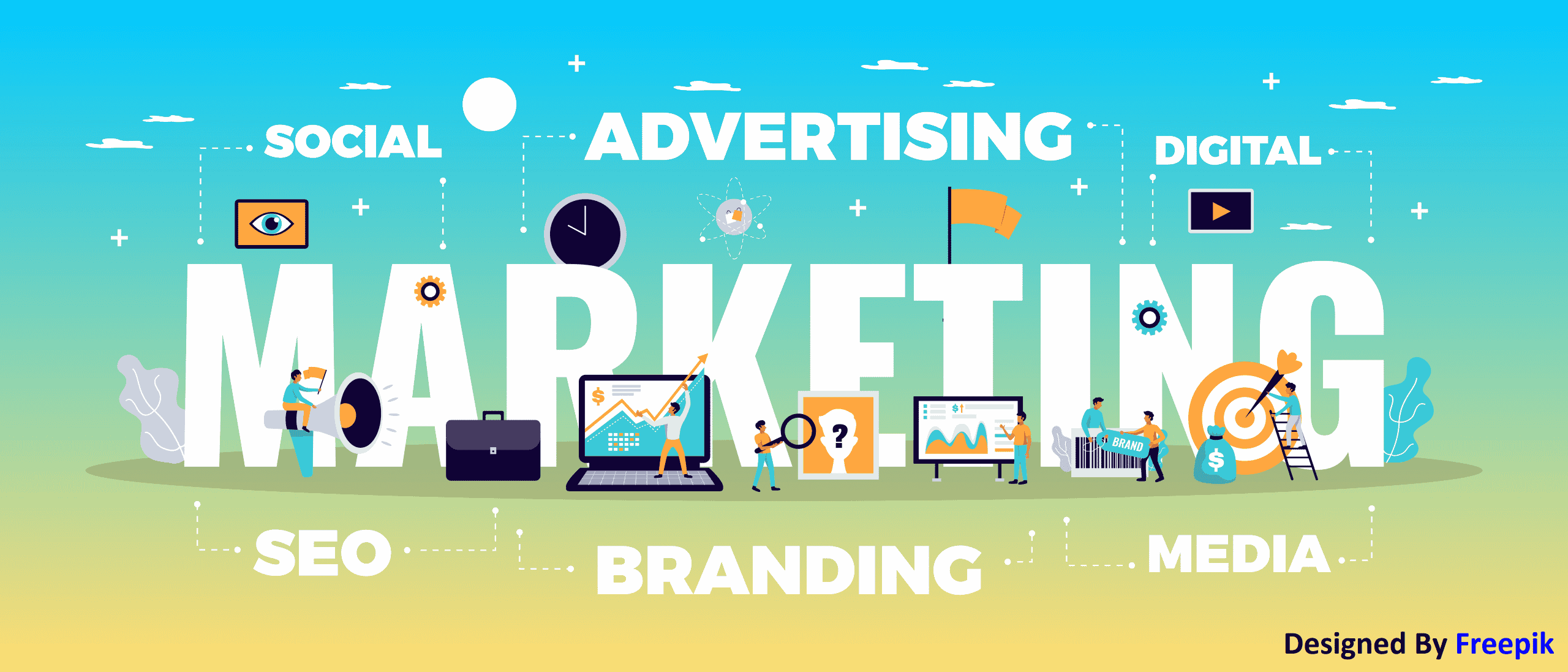
Search Engine Optimization (SEO) and Social Media Marketing (SMM)
SEO stands for Search Engine Optimization, whereas SMM stands for Social Media Marketing, the most recent of the three. Let's learn more about SEO and SMM.
SEO (Search Engine Optimization):
SEO is a term for search engine optimization, a collection of strategies aimed at improving the visibility and positioning of web pages in organic search results. Because organic search is the most commonly used method for people to discover and access online information, a robust SEO plan is critical for increasing the quality and number of visitors to your website.
How does SEO work?
Search Engines use BOTS to maneuver through websites collecting information about the web pages and indexing them. An index is like a library where the librarian can retrieve a book (in this case, a web page) you want.
Following that, algorithms analyze pages in the index by taking hundreds of ranking variables or signals into consideration to determine how pages appear in search results for a given query. In the analogy stated above, the librarian has read every book to know the best answers to your questions.
SEO's Importance in Marketing
The definition of SEO can be divided into three parts to understand its importance:
- Organic Search Results: Unpaid listings on a search engine results page (SERP) are selected by the search engine to be most relevant to the user's query. Ads (often known as PPC or pay-per-click ads in this context) dominate SERPs. Organic search results differ from these adverts in that they are positioned based on the organic ranking algorithms of the search engine rather than by advertiser bids. You cannot pay to rank better in organic search results.
- Organic Traffic Quantity: The traffic quantity states the number of individuals arriving at your site through organic search results. Users are likely to click on search results near the top of the SERP, so utilize your SEO approach to rank the relevant pages high. With more high-quality visitors, more worthwhile conversions will increase.
- Organic Traffic Quality: You can attract all the traffic, but it is only relevant if they come because Google tells them. For instance, if you're a resource for Apple laptops when you're selling apples, the visitors are likely to depart without converting. Visitors interested in the products, information, or other resources the site provides constitute high-quality traffic. High-quality SEO takes advantage of a search engine's efforts to match a user's search intent to the web pages listed in the SERP.
SMM (Social Media Marketing):
Social Media Marketing (SMM) sells a company's products and services on social networks. SMM allows businesses to communicate with existing consumers to promote their desired culture and mission. Marketers can track the success of their efforts using data analytics tools designed specifically for social media marketing.
There are also a variety of social media management solutions available to assist businesses in making the most of the social media networks described above. Buffer, for example, is a platform of social media management tools that can assist in achieving success with social media marketing; this helps success in developing a brand or growing the business.
Social media has transformed, with approximately 4.1 billion internet users and about 3.1 billion social media users.
According to a survey of over 600 social media users conducted by 'The Manifest,' people regularly visit a range of social media networks through a mobile app or PC web browser.
Importance of Social Media Marketing:
Social media is usually used for increasing brand exposure. According to Hootsuite, public social feeds account for 52% of online brand discovery. In other words, most individuals find out about new brands through social media.
Every day in 2019, people spent 2 hours and 24 minutes. And this statistic has increased as well: time spent on social media has climbed by 1.4 percent resulting in excellent means to not only contact your target audience but also interact with them over time.
Every year, social networks become more critical in terms of increasing sales. In 2019, for example, 43 percent of internet users utilized social media to investigate products before purchasing. Although only 12% of people are ready to click a "purchase" button on Facebook or Instagram, social media plays an extensive role in the early phases of the buyer's journey.
Resource:
https://moz.com/learn/seo/what-is-seo
https://sendpulse.com/support/glossary/social-media-marketing
https://www.techfunnel.com/martech/social-media-marketing-guide/
https://www.tzisolutions.com/blog/what-are-seo-sem-and-smm-what-are-the-main-differences#:~:text=SEO%2C%20SEM%20and%20SMM%20are,these%20three%20online%20marketing%20platforms
Disclaimer:
Wherever any material is quoted as sourced from the published text with publishing rights vested in an individual, it is stated that it is a pure quotation and has no intention to claim it as our own.
Image Source: www.freepik.com
2194 adminJune 16, 2022

Margins – Digital Transformation Leads to Revenue Growth
Digital transformation may help your firm save money and stand out from the crowd. Revenue growth is greatly aided by digital transformation. And as the 2020 pandemic showed, it was not just a growth element but also a lifeline for enterprises to survive.
The Pandemic Booster:
The COVID-19 dilemma appears to present a startling look into a future society where digital has become crucial to every encounter, driving businesses and individuals to move quickly up the adoption curve. A future in which digital channels are the primary (and, in some cases, exclusive) method of consumer contact and automated processes are the primary engine of productivity—and the foundation of flexible, transparent, and reliable supply chains. A future in which agile working methods are required to meet daily changes in client behavior.
According to a survey, within six months after the pandemic's onset, the values of digitally mature enterprises increased by 23%. The importance of the least digitally advanced enterprises increased by only 7%. Companies are doing more online commerce as customers do. The crisis hastened the adoption of digital transformation by three years. Organizations are now three times more likely to claim that at least 80% of their consumer contacts are digital.
Digital Maturity and Transformation:
Not all digital transformations are the same. As seen by the shops in the preceding example, a level of digital maturity is critical to revenue growth and business survival. Digital maturity is a long process that equips organizations with the tools to navigate the future. In other words, digital transformation is reactive, but digital maturity is proactive.
That is not to imply that digital change is blind. The cornerstone of digital transformation is technology (although it takes much more than tech). Consider the following example of digital transformation in the absence of digital maturity:
Moving beyond the CRM, your marketing department may utilize a marketing automation platform, while your sales department may use a CRM. If each forum is categorized and not connected, you'll have more challenges than efficiencies. Both are critical components of digital transformation and customer-centricity, but as silos, they hamper essential cooperation in the absence of an integration strategy.
A Fresh Perspective on Profit Margins and Growth:
Traditional margin improvement approaches, including operating model transformation, outsourcing, and external expenditure reduction, are soon becoming table stakes that are unlikely to produce the requisite margin and performance improvement.
Businesses should consider a new approach to margin and business improvement that can assist them in identifying, prioritizing, and pursuing new growth opportunities. Processes like generating cost savings, freeing up cash, and supporting the development of capabilities and talent required to achieve their strategic vision to help them thrive in an uncertain environment. This innovative technique includes several crucial components:
- A clear idea of the surroundings
- Understanding the value lever trade-offs
- Using many tactics at the same time
- Using modern technology to their full potential
- Organizational alignment
A Comprehensive Approach to Revenue Growth
Sustaining growth is challenging for any business, but the benefits are enormous: organizations that exceed their rivals in revenue growth and economic profit generate more returns to shareholders every year.
Several reasons contribute to growth transitions being a long-term task. Successful growth initiatives need cross-functional collaboration, but businesses frequently fail to identify an end-to-end owner accountable for results. Attractive end markets constantly shift and create new possibilities, but few firms can effectively reallocate resources. Digital technology and analytics have the potential to accelerate growth. Many businesses lack the essential expertise and competencies in analytics and general management tasks.
A comprehensive approach to increasing portfolio and market performance, commercial excellence and innovation, and business development may compound the top-line gains. Firms that successfully grasp one area have attained yearly growth rates one percentage point greater than the sector average. On the other hand, mastering two or all three categories may improve annual growth by 3.6 percentage points higher than peers.
Companies that efficiently use big data might create more income and produce more unique ideas and competencies. They develop new income streams, company divisions, and stand-alone enterprises.
Many organizations have large volumes of data that have the potential to be utilized to reduce costs or improve customer experience. Having data is not enough. Using it efficiently will make informed judgments. Understanding the impact of that information on the firm's profit margin is critical for developing a plan that maintains the company's profitability. Obtaining the correct information entails determining whether data is pertinent to the company's decision-making process.
Digital transformation is a challenging task. Each organization must assess its prospects, needs, and resources to prioritize its activities and achieve its objectives.
Resource:
https://www2.deloitte.com/us/en/pages/operations/articles/global-cost-management-survey.html
https://www.pedowitzgroup.com/digital-transformation-revenue-growth/
https://www.mckinsey.com/industries/advanced-electronics/our-insights/accelerating-revenue-growth-through-tech-enabled-commercial-excellence
https://datascope.io/en/blog/leverage-digital-technology-to-increase-revenue/
Disclaimer:
Wherever any material is quoted as sourced from the published text with publishing rights vested in an individual, it is stated that it is a pure quotation and has no intention to claim it as our own.
Image Source: www.freepik.com
2000 adminJune 16, 2022
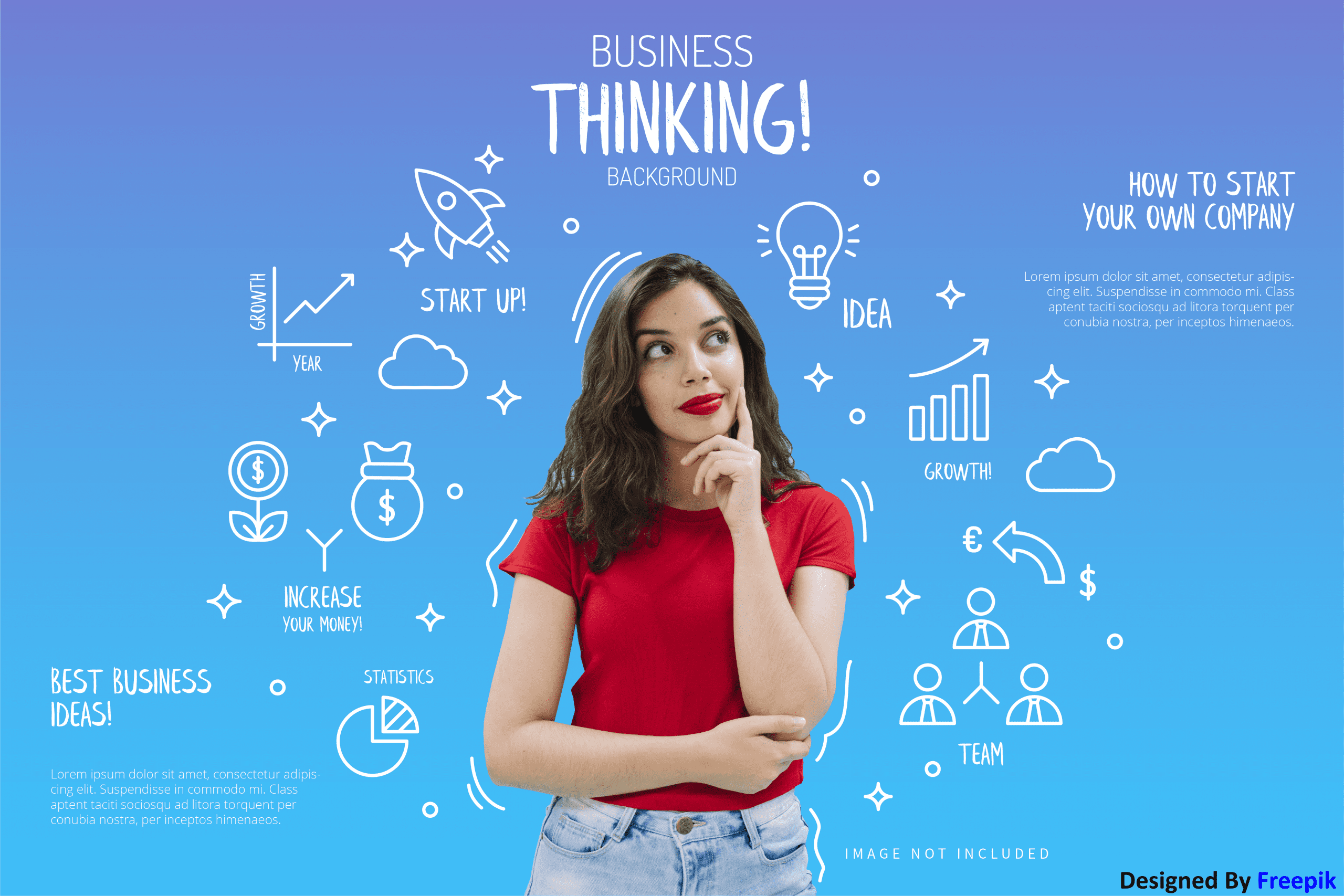
Ideation
Ideation is a creative process where designers explore ideas in sessions (e.g., brainstorming, worst possible idea). It is the third level of the Design Thinking methodology. Participants gather with open minds to generate ideas in response to a problem statement in a supported, judgment-free environment. Ideation is a third stage of the design thinking process that encourages open thinking and risk-taking to generate solid and distinct ideas. Ideation differs from a typical concept planning session because it allows for independent thinking and teamwork. In most idea brainstorming sessions, team members become weighed down by listening to a superior's strategy. Their thoughts become focused in one direction on hearing from the superior, and their strengths and inventiveness are lost. As a result, the team generates pet ideas that support one significant idea while overlooking the capabilities of each member that should be utilized.
Finding New Perspectives is the Goal of Ideation Sessions:
It isn't easy to obtain the perspective needed to identify design solutions. You'll need a dedicated location for standing back and seeking and seeing every view to conducting good ideation sessions. But first, your team must identify the appropriate problem to treat. After "Empathize" (gaining user insights via research/observation) and "Define" (identifying links/patterns within those insights to produce a meaningful and feasible issue statement or point of view), Ideation is the third phase of the design thinking process.
Before looking for ideas, your team requires a clearly defined challenge to a focused problem statement or point of view (POV) to motivate and guide everyone. "How might we...?" queries, such as "How might we build an app that searches for affordable hotels in safe neighborhoods?"
Assist in reframing difficulties and encouraging effective collaboration toward potential solutions to bring people together to generate ideas and break down barriers. It would be best to have a trained facilitator and a creative environment, which includes a ready room with posters of personas, relevant information, etc. Your team will also need guidelines, such as a 2-hour time limit, quantity-over-quality concentration, a ban on distractions like phones, and a "There is no bad ideas" mindset.
Ideation Techniques:
Because of the nature of Ideation, it is critical to adopt appropriate strategies for the type of thoughts you are attempting to develop. The plan you select must also meet the needs of the ideation team, their levels of creative output, and their previous experience with ideation sessions. Here's a rundown of the essential ideation techniques:
Brainstorm:
Brainstorming is a well-known approach that uses group interaction to generate solutions by building on one another's ideas. Use this strategy with a group of five to seven people for more effective brainstorming. Limiting your brainstorming session to 20 minutes and having a minor group helps keep the topic focused. To develop more diverse ideas, try to include participants from various backgrounds or perspectives.
As the tagline "1+1=3" suggests, ideas are combined to form one good idea. Participants should be able to discuss their thoughts without fear of being criticized freely.
Brain Dump:
A brain dump is similar to Brainstorm; however, it is completed independently. The participants jot down their thoughts on post-it notes and then share them with the group.
Storyboarding:
When designing or optimizing processes, storyboarding is a valuable tool. Participants build a visual tale that illustrates their ideas and potential outcomes, allowing them to understand areas of improvement. Follow your consumer through the process, including the effects of your solutions.
Mind Mapping
Mind mapping is a visual technique that develops linkages between the problem and alternative solutions your team is attempting to address. Write your problem statement or a high-level term linked to the situation in the center of a piece of paper or whiteboard. You will detail any related solutions or ideas raised by the team in the area surrounding that statement and use lines to connect them to the central theme. Next, add a layer that outlines how you will implement the recommended solutions, tying it to the preceding layer.
Worst Possible Idea:
The worst idea technique challenges participants to think of their worst possible solutions to a problem. While a brainstorming session supports all ideas, some people may be concerned about potential criticism; this strategy alleviates that concern by welcoming terrible ideas. It frequently creates a more enjoyable environment as people try to entertain one another and use their ingenuity to develop outrageous ideas.
Questioning Assumptions:
Many sectors have preconceived notions about accomplishing things, but this technique challenges those assumptions to generate more innovative ideas. As a result, you might choose to apply this strategy to improve an existing product or create a new one. Consider what you want to solve or develop, then brainstorm 20 to 30 assumptions about that product, service, or idea. These assumptions can be both optimistic and wrong, and they should apply to all elements of your company.
Final Thoughts
Ideation is frequently the most exciting step of a Design Thinking project since it allows for practically available free-thinking within the specified subject. The goal of the Ideation stage is to produce a vast number of ideas — ideas that may inspire newer, better ideas — that the team can then filter and narrow down to the best, most practical, or most original ones. Numerous excellent ways can assist the design team during the Ideation sessions.
Resource:
https://www.interaction-design.org/courses/design-thinking-the-beginner-s-guide
https://www.interaction-design.org/literature/topics/ideation
https://www.indeed.com/career-advice/career-development/ideation-techniques
https://www.nngroup.com/articles/ideation-in-practice/
Disclaimer:
Wherever any material is quoted as sourced from the published text with publishing rights vested in an individual, it is stated that it is a pure quotation and has no intention to claim it as our own.
Image Source: www.freepik.com
966 adminJune 14, 2022

Commercialization
Many technologies begin in a research and development laboratory or an inventor's workshop and may not be commercially viable in their early stages (as prototypes). The "development" segment of the "research and development" spectrum necessitates time and money as systems are designed to turn the product or method into a profitable commercial proposition.
Importance Of Commercialization
Commercialization is how businesses raise and solve problems with new products before bringing them to market. It assists firms in determining when to launch a specific product by reviewing various factors that influence or delay a launch. Several factors may affect an outcome, such as unfavorable market conditions or inquiries requiring changes.
Firms make critical strategic decisions and choices. Choosing where to launch is an integral part of the process. Companies decide whether to market their product locally, nationally, or internationally. They also consider available resources, such as operational capacities and capital. Business leaders also conduct marketing research to define their primary consumer group.
Now that the significance of commercialization has been established, it is time to examine its benefits.
Advantages:
Job Creation: Commercialization aids in the creation of job opportunities. When new products and services are introduced, the workforce must carry out the entire process, from introduction to completion.
Solutions are provided by Commercialization: The mother of inventions is a necessity. When there are needs and problems, humanity's innovative spirit is triggered to seek and provide solutions. Solutions are never given away for free.
Commercialization Reduces Monopoly in Business:
Commercialization Lowers Business Monopoly. A monopoly in business is the exclusive provider of a specific product or service by a single company or individual. It is the market dominance of one or a few brands or products. Monopolies in business are not always fair.
Creation of a Pathway for Healthy Competition: Competition is always encouraged instead of a monopoly in business. People venture into commercialization where there is always a surge in demand for existing brands to continue developing. Because of this competition, industries work harder to be in high order by providing the best quality services to people.
Economic Development and Productivity: Commercialization contributes significantly to the state's economic development because it involves any activity to monetize. It develops the economy by ensuring consistent product availability, reducing importation, creating job opportunities, and maintaining the value of the state currency.
Disadvantages:
High Production Costs: Commercialization undoubtedly necessitates significant economic input in capital and other resources. Due to the high cost of resources and materials used in its production, commercialists may have difficulty executing their smooth innovation. And if the production cost is high, the retail price will be higher.
Commercialization is Profit-Oriented and not Welfare-Oriented: Commercialization is primarily concerned with profit rather than people's welfare. Its output is better regarded as solutions provided in exchange for a fee.
Uneven Distribution: Product distribution cannot be even. Commercialization also promotes an unequal distribution of wealth.
Redundancy: The inevitable innovation of machines for commercialization may result in redundancy, a state in which employees are told not to work as they are no longer needed, usually because devices have taken over overwork that the workforce would ordinarily do.
Conclusion
Commercialization can be led by either the government or the private sector. Commercialization and privatization must be distinguished. While privatization is the transfer of management and control of government corporations to the private sector, commercialization is the extraction of profit from a new or existing entity, which could be either government or private.
Resource:
https://sendpulse.com/support/glossary/commercialization
https://www.kofastudy.com/courses/ss3-commerce-1st-term/lessons/deregulation-week-8/topic/advantages-disadvantages-of-commercialization/
https://bscholarly.com/advantages-and-disadvantages-of-commercialization/#Advantages_of_commercialization
Disclaimer:
Wherever any material is quoted as sourced from the published text with publishing rights vested in an individual, it is stated that it is a pure quotation and has no intention to claim it as our own.
Image Source: www.freepik.com
728 adminJune 14, 2022

Digital Transformation And Its Benefits
According to sources, digital transformation is about creating a digital enterprise. This company uses technology to continuously improve all parts of its business models (what it offers, how it interacts with consumers, and functions." There is no need for small enterprises to start to set up their business procedures and then transform them later. You can future-proof your company from the start. Building a 21st-century firm on sticky notes and handwritten ledgers is not feasible. Digital thinking, planning, and building positions you to be agile, versatile, and ready to develop.
The Main Drivers of Digital Transformation
Many businesses prioritize digital transformation, but it is critical to understand the causes driving the need for digital change. The ability of technology to swiftly collect, create, analyze, and send data is the primary driving force behind digital transformation. Artificial intelligence (AI), cloud computing, mobile technologies, social media platforms, and next-generation technologies such as the internet of things (IoT), edge computing, and robotic process automation (RPA) have transformed how quickly we obtain information.
Implementing these technologies in the marketplace by digital titans such as Amazon, Airbnb, Uber, and others has altered the types of products and services that customers expect. Consumers, for example, want businesses to respond fast and provide products and services that are suited to their specific demands. They have also learned to anticipate intuitive, simple interfaces, and they prefer digital interactions that can occur at any time and from any device.
Importance of Digital Transformation
The overall goal of any digital transformation is to better your current operations. Companies must remain competitive in their industries, which necessitates digital transformation. No evolution, no promotion.
According to sources, "just 8% of worldwide organizations have achieved their planned business outcomes from their digital technology investments." One technique that distinguishes leaders is investing more in transforming their businesses rather than just running them. Most organizations amass mounds of client data, but the true benefit comes from utilizing this data for analysis leading to the company's growth. Digital transformation offers a process for acquiring the relevant data and completely using it for higher-level business insight. It enables various functional divisions within an organization to translate raw data into insights across several touchpoints.
Examples of Digital Transformation:
Digital transformation can take many shapes, but it typically falls into one or more categories: digitizing the customer experience, creating new market opportunities, enabling innovation, and boosting operational efficiency.
There are numerous examples of corporate success with digital transformation. Let's take a look at some of them:
Nespresso - Nespresso, a manufacturer of specialty coffee machines and an operating subsidiary of the Swiss-based Nestlé Group, implemented a cloud-based CRM system that provided customers with omnichannel access to purchasing and customer care. Customers can contact the company via the internet, mobile device, or in-store visits. Having a 360-degree view of each of its customers has enabled Nespresso to expand into new regions and increase sales.
Netflix - Netflix began as a mail-based digital video disc (DVD) rental service in 1997. It has remade itself as an online video streaming service that provides personalized choices depending on each customer's tastes.
Desktop Metal – Desktop Metal is reshaping the manufacturing landscape with unique digital technology for 3D-printed metal. Automobile manufacturers have already made significant investments in this new technology. Aside from automotive uses, there are further applications in the medical, dentistry, aerospace, and luxury markets.
Benefits of Digital Transformation:
Time and Cost Reduction: The improved productivity in labor leads to significant savings in time and costs in all company departments.
Geographical Border Expansion: Digitization helps companies internationalize their product or services. It generates essential benefits such as increased turnover, reduced risk, and increased competitiveness.
Analytics: Digitalization work helps a company to combine all the customer data in one place due to excellent business insight. So, the company can make correct decisions at the right time.
Extends the Life of the Company: The use of new technology and some specialized software helps the company keep up to date.
Increased Revenue: With the help of digital transformation, many companies can generate more ROI.
Resource:
https://www.techtarget.com/searchcio/definition/digital-transformation
https://enterprisersproject.com/what-is-digital-transformation
https://whatfix.com/digital-transformation/
https://terakeet.com/blog/digital-transformation-examples/
Disclaimer:
Wherever any material is quoted as sourced from the published text with publishing rights vested in an individual, it is stated that it is a pure quotation and has no intention to claim it as our own.
Image Source: www.freepik.com
899 adminJune 6, 2022

Cyber Security And Data Security
This article will define both words and explain how they might be applied in your organization.
What is Data Security?
When people talk about information security, they usually mean data security. This sort of security protects data from unauthorized accidental, or intentional modifications. Physical safety, logical controls, cyber security, administrative controls, and other protocols are also used to protect your data. Let's discuss more of these techniques.
Types of Data Security
• Encryption: Encryption keys scramble data using an algorithm to convert standard text characters into an unreadable format that only authorized users can read. File and databases use encryption/tokenization solutions to protect sensitive volumes by disguising their contents. The majority of systems also incorporate security key management features.
• Erasure Data: Data erasure is safer than ordinary data wiping. One must use software to overwrite data on any storage device. Data recovery is close to impossible if not done.
• Data Masking: Organizations can allow teams to develop applications or train individuals using accurate data by masking data. It conceals personally identifiable information (PII) as appropriate so that development can occur in compliant contexts.
• Data Resilience: The ability of an organization to withstand any failure – from hardware issues to power outages affecting data availability – determines its resilience.
What is Cyber Security?
Cyber security is the activity of protecting computers, servers, mobile devices, electronic systems, networks, and data from hostile attacks. It is often referred to as information technology security or electronic information security. The word is used in various contexts, ranging from business to mobile computing.
Types of Cyber Security:
• Cybersecurity of Critical Infrastructure: Supervisory Control and Data Acquisition (SCADA) systems usually depend on older software. Critical infrastructure organizations are frequently more vulnerable to attack than most.
• Network Security: Addressing vulnerabilities in one's operating systems and network architecture is part of network security, e.g., servers and hosts, wireless access points, network protocols, etc.
• Cloud Security: Cloud security is a set of security safeguards meant to safeguard cloud-based infrastructure, applications, and data. These safeguards cover user and device authentication, data and resource access management, and data privacy.
• Application Security: Application security is all about addressing vulnerabilities caused by insecure development processes in the design, coding, and publication of software or a website.
Difference between Cyber Security and Data Security:
To summarize, data security is concerned with securing the data itself. On the other hand, cyber security comprises all forms of digital security, including digital data and digital systems. Contact the experts at SSI today if you're ready to improve your data security and cyber security protocols.
Resource:
https://insider.ssi-net.com/insights/what-is-the-difference-between-data-security-and-cyber-security
https://www.ibm.com/topics/data-security
https://www.itgovernance.co.uk/what-is-cybersecurity#:~:text=Cyber%20security%20is%20the%20application,of%20systems%2C%20networks%20and%20technologies
https://www.kaspersky.com/resource-center/definitions/what-is-cyber-security
Disclaimer:
Wherever any material is quoted as sourced from the published text with publishing rights vested in an individual, it is stated that it is a pure quotation and has no intention to claim it as our own.
Image Source: www.freepik.com
914 adminJune 6, 2022 Youtube Video
Get a Quote
Starting a project is just a few steps away...
